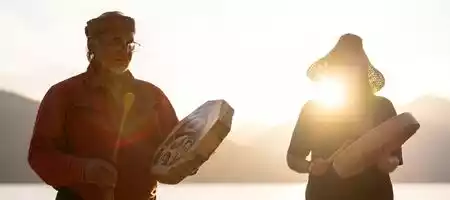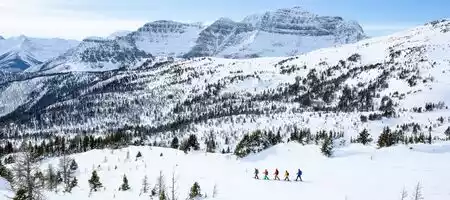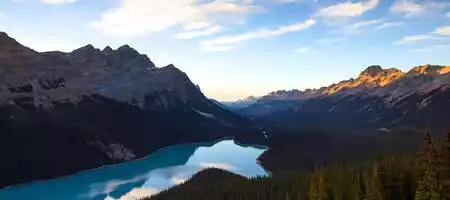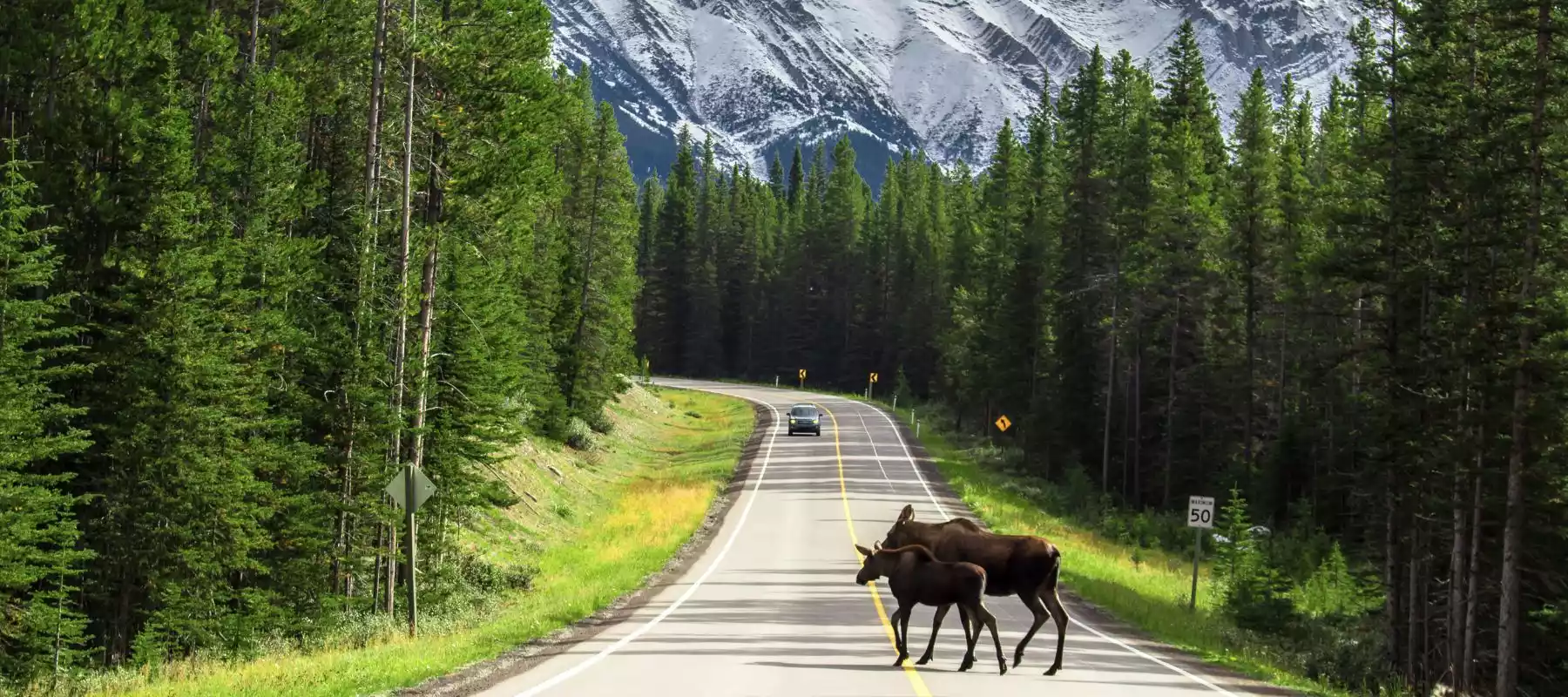
Last updated: February 19, 2025
Mountain roads have long drawn travelers into the Canadian Rockies. They offer a freedom of exploration — the chance for experiential travel at it best — and go where their hearts take them. From passing through narrow valleys, road winding between dense pine, to wide plains backed only by walls of mountain, the Canadian road feels like no other.
A summer road trip is nothing new. Stocked with a car full of gas station snacks and summer tunes, you feel ready to venture into the wilderness. And, when put against a backdrop like the stunning Rocky Mountains, it’s unbeatable.
But if you’re not quite there yet, and are just beginning to plan your summer in the mountains, this is your guide to a perfect Canadian Rockies itinerary, elevated to perfection by travel experts without missing the core of what makes a road trip fun.
At Canada by Design, we have over 25 years of experience planning trips to the Canadian Rockies. By working with you one-on-one, our Travel Designers help you create and customize a trip to your desire, and enhance it with little luxuries and their insider knowledge. This itinerary follows our best-selling Road Trip through the Canadian Rockies, with additional tips and tricks along the way. If you are looking for something similar, or want to create something entirely unique, reach out today to begin planning your journey.
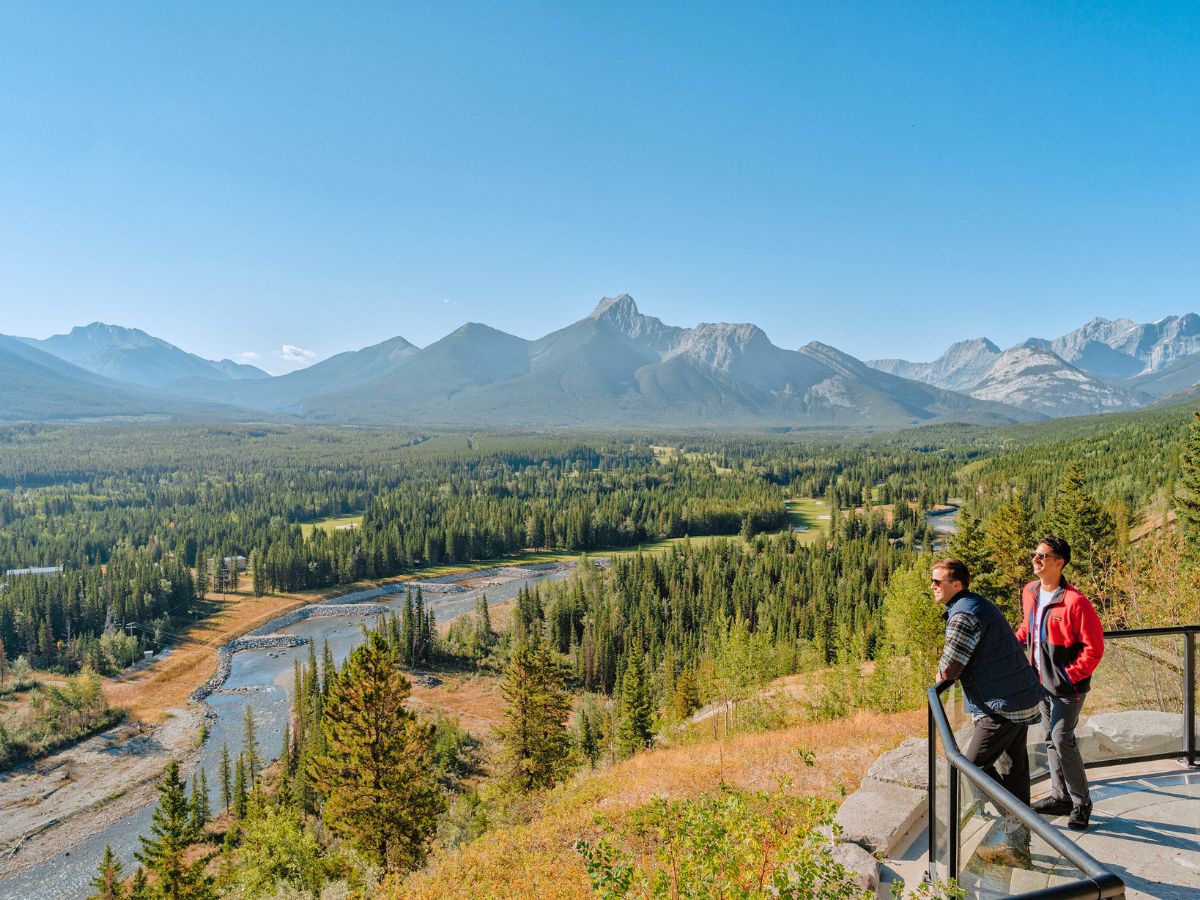 Looking out over the Canadian Rockies
Looking out over the Canadian Rockies
How many days do you need in the Canadian Rockies?
When visiting the Rocky Mountains, you should plan to spend at least 7 days there. But Canadian Rockies itineraries with more time in your favorite stops are the perfect way to tailor your trip to your interests.
What is the best Canadian Rockies itinerary for 7 days?
With just one week for your Canadian Rockies road trip, you will need to prioritize what you want to see most. For most people, this means stopping at Banff, Jasper, and Lake Louise.
Day 1 | Calgary to Banff
Day 2 | Banff
Day 3 | Banff to Lake Louise
Day 4 | Lake Louise to Jasper (via Athabasca Glacier)
Day 5 | Jasper
Day 6 | Jasper to Edmonton
Or, for an optional end to your trip:
Day 6+7 | Jasper to Vancouver by train
This is a whirlwind Canadian Rockies itinerary. We will use this as our base but recommend spending an extra night in destinations like Banff and Jasper to experience multiple aspects of each place without feeling rushed. Or, you can visit spots further off the beaten track, like Canmore or Yoho National Park.
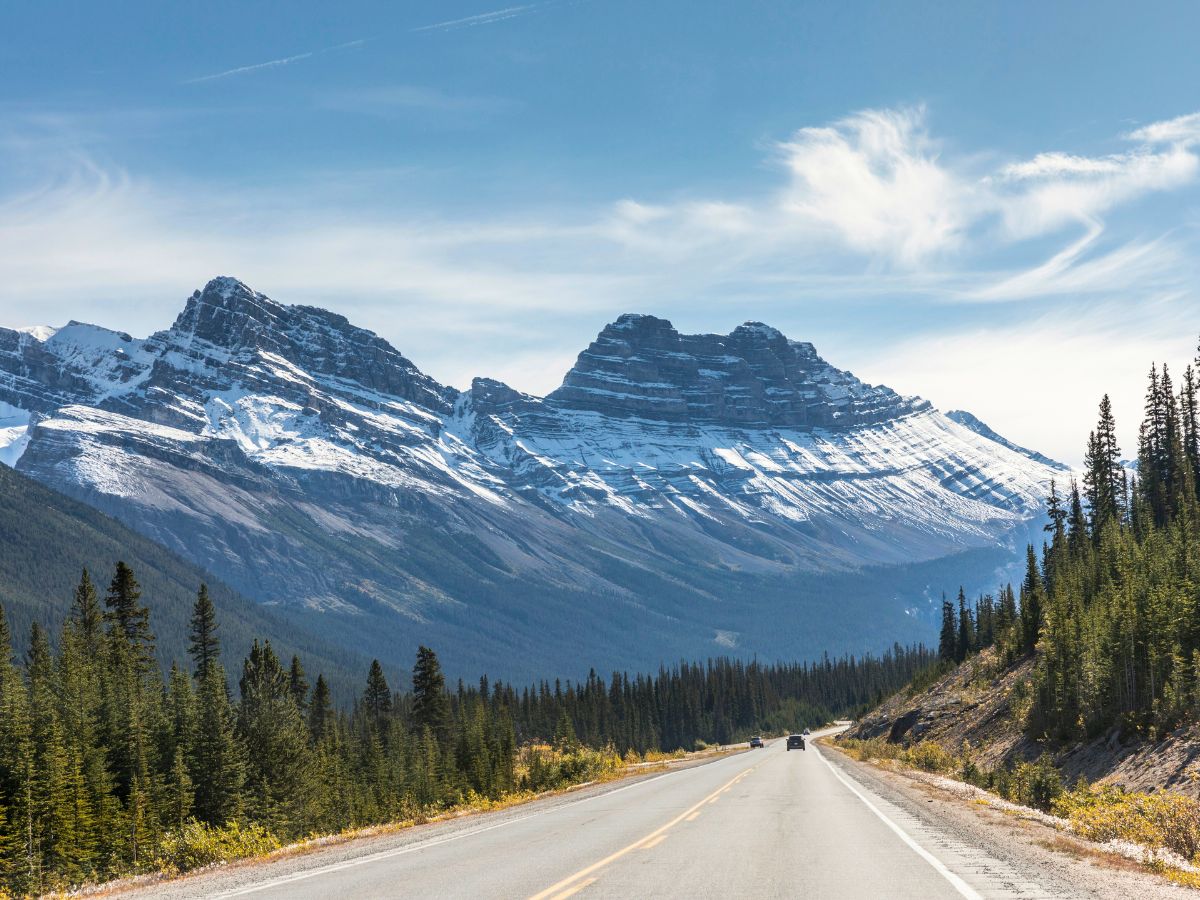 Driving through the Rockies | Credit: Rocky Mountaineer
Driving through the Rockies | Credit: Rocky Mountaineer
Planning Your Canadian Rockies Itinerary for an Unforgettable Summer Road Trip
In this guide, we will cover:
- Planning your trip
- Stops in the Canadian Rockies
- Day-by-day itinerary
- Optional ending to your trip
Planning Your Canada Road Trip
Before you plan your itinerary, you should determine a few key things.
How Long Do You Want to Travel For?
As we said earlier, 6-7 days is the minimum recommended time to spend in the Canadian Rockies. But 10 days is ideal to see the best of Banff, Jasper, and Lake Louise. With 7 days, you’ll have to prioritize and make compromises, but with 10 days, you’ll have more flexibility and time to explore.
Where do You Want to Start and End Your Road Trip
The best place to start and end your trip is Calgary International Airport (YYC), which is a hub for international flights and is conveniently located near Banff. We recommend arriving in Calgary the day before you begin your road trip so that you have a full day to enjoy the sights.
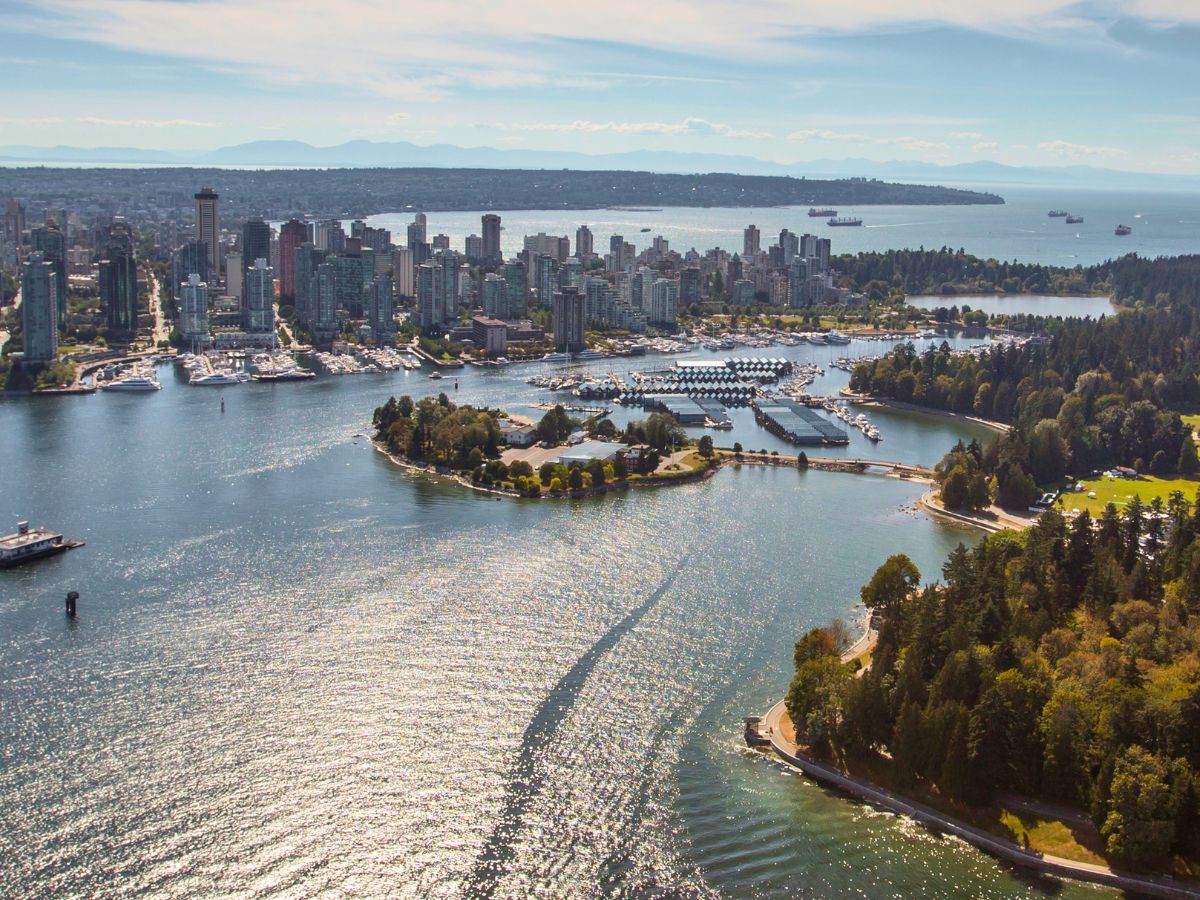 Downtown Vacouver | Credit: Rocky Mountaineer
Downtown Vacouver | Credit: Rocky Mountaineer
On the other side of the mountains, Vancouver offers another place to start or end your trip. While further away from the Rockies, the coastal city is easily accessible from the mountains by both road and train travel.
The last option for driving to the Rockies is typically Edmonton, further north in Alberta, but visitors should expect a longer drive between the city and the mountains.
Where do you want to go in the Rockies?
The most popular places to visit in the Canadian Rockies are Banff, Jasper, and Lake Louise. Most road trips pass through each of these locations, and include time staying at each.
Additional time to see lesser-known stops like Canmore or Yoho National Park can add to your unique trip. We will cover each in more detail in a moment.
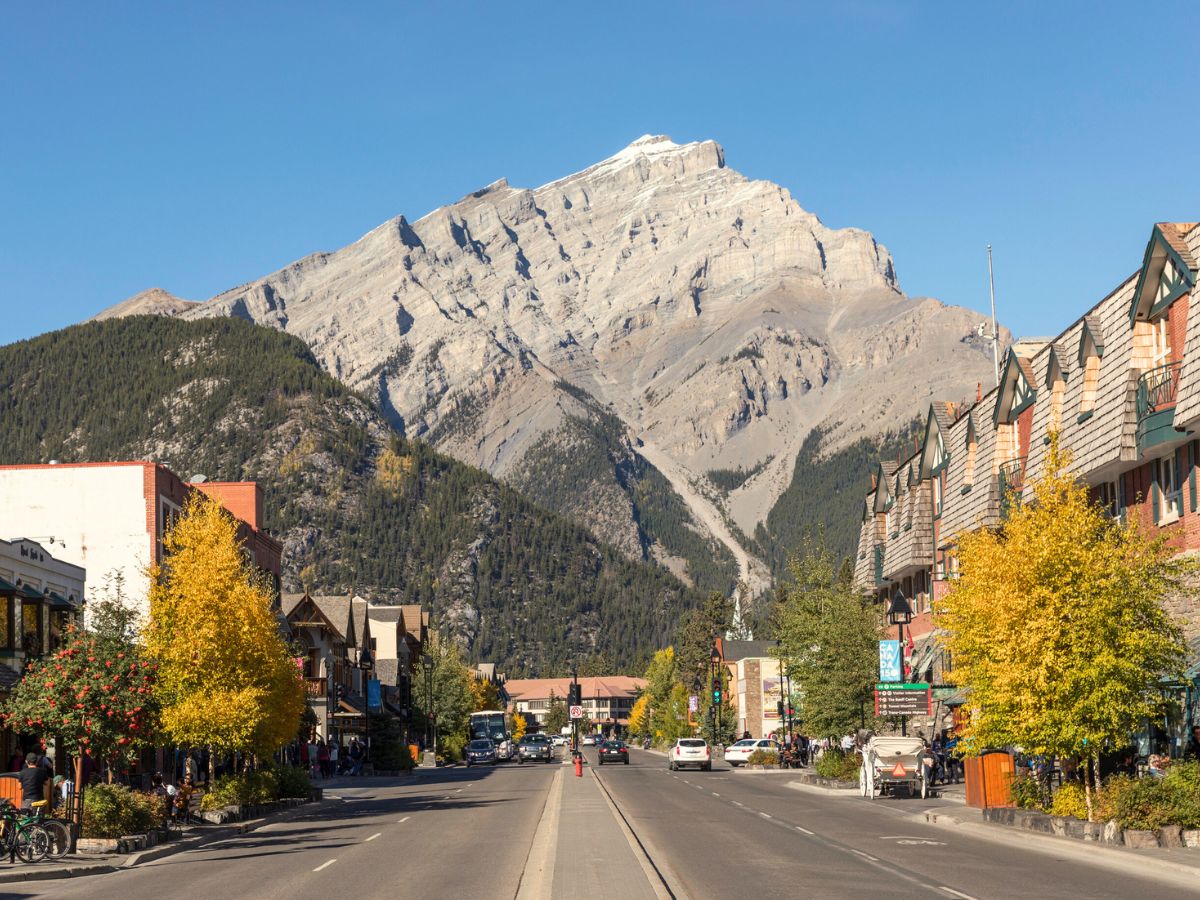 Banff Avenue backed my Mount Rundle | Credit: Rocky Mountaineer
Banff Avenue backed my Mount Rundle | Credit: Rocky Mountaineer
When Do You Want to Visit the Canadian Rockies?
The Canadian Rockies are an incredible destination year-round, but the best season for a road trip is between May and early September, when the roads are clear and the weather is good.
Of course, there are some downsides to traveling during peak times. Popular spots tend to be busier, and prices are higher. But, in our opinion, these are outweighed by the chance to see the Rocky Mountains basking in the long summer sun, and wildlife wandering the hillsides.
If you have a tighter budget, consider shoulder season travel. In May, September, and October, the weather is more variable, but you are treated to a more exclusive — and cheaper — trip than what you would get in July or August.
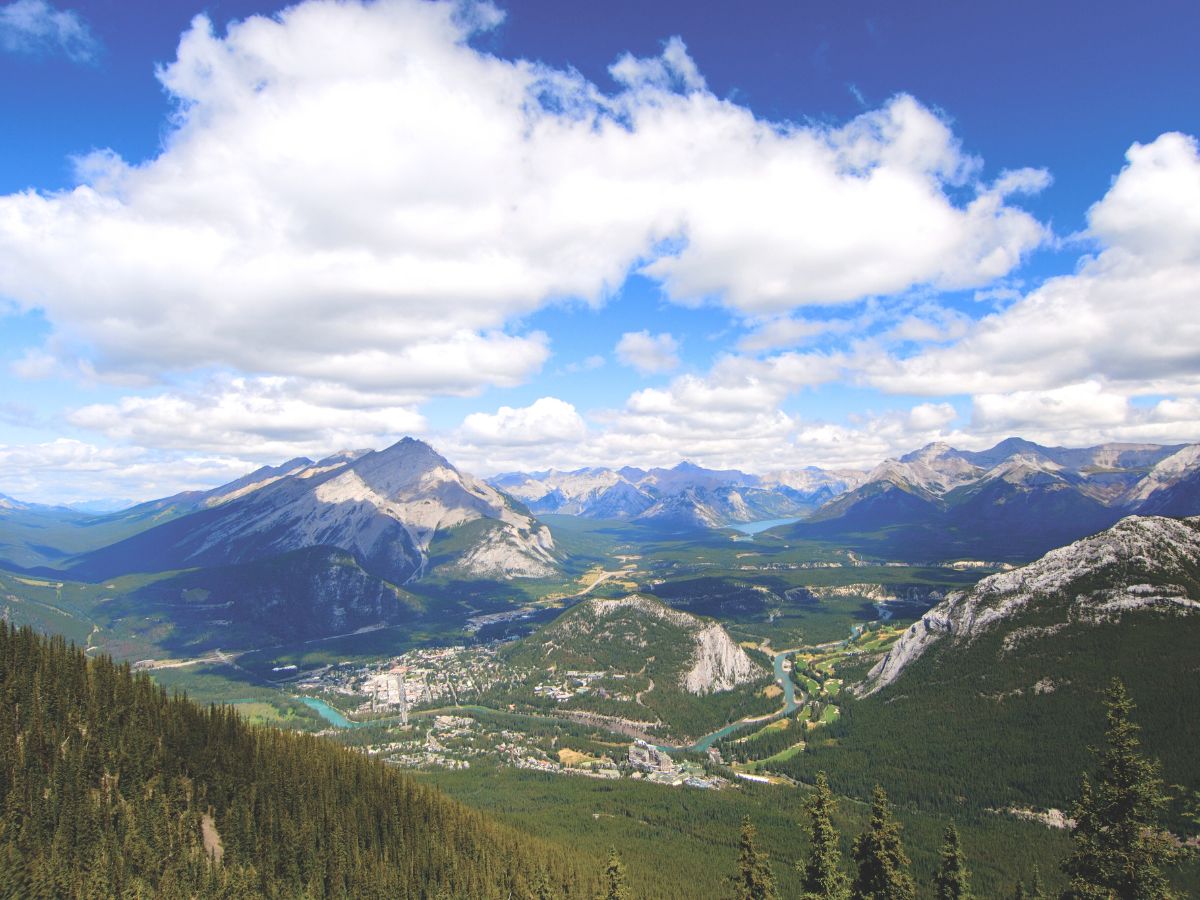 Banff town from above
Banff town from above
Banff National Park
Banff National Park is probably the first place that comes to mind when you think of ‘Canadian Rockies.’ It is the oldest National Park in the country — and the third-oldest in the world — and is the birthplace of tourism in Canada. To this day, Banff remains a central hub for visitors in the Rockies.
Where to go in Banff National Park
Banff National Park is much more than its town. It spans from just below the Columbia Icefield in the north to Banff town in the south — that’s 2,564 square miles!
The National Park is home to stunning scenic drives, the two most famous being the Icefields Parkway and the Bow Valley Parkway. The two make beautiful alternatives to the trans-Canada ‘Highway 1.’
Must-see stops along the way include the iconic Lake Louise (but we have a dedicated section entirely for that coming up soon), Moraine Lake, Lake Minnewanka, and lesser-known Bow Lake and Peyto Lake.
While it’s not in Banff National Park itself, Canmore sits just across its southern border and offers a quieter addition to your Rockies trip.
What to do in Banff National Park
Banff National Park is defined as much by its waters as by its mountains. These are lakes so blue and rivers so expansive that they almost seem unnatural.
Exploring Banff’s waters brings a fresh perspective to the region. Either voyaging across its largest lakes on a Lake Minnewanka cruise or getting in touch with its rivers on a Bow River canoe tour let you experience the water at your speed, while learning their history and culture from an expert guide accompanying you all the while.
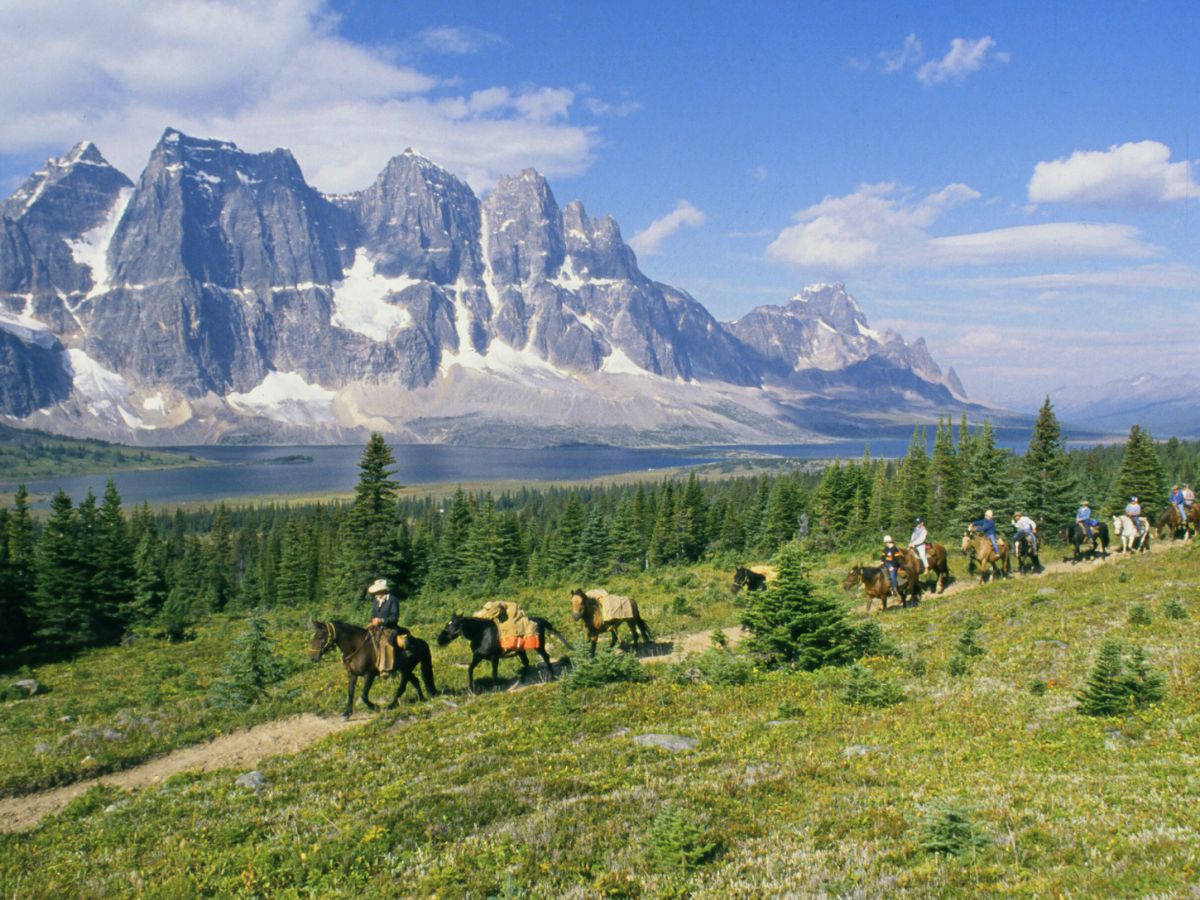 Horseback riding in the Canadian Rockies
Horseback riding in the Canadian Rockies
When it comes to the mountains, exploration is best done by foot or horseback. The rewarding feeling of venturing away from the roads and being met with serenity — quiet forest on all sides and backed only by mountains — is unbeatable. Explore the banks of the Bow River by horseback, or take one of the numerous hikes from roadside trailheads with options for all abilities.
Banff Town
Banff is the quintessential mountain town experience. Its main street, Banff Avenue, is lined with stores — everything from local shops to major Canadian brands — eateries, and hotels. And, behind it, towering mountain ranges in coats of thick pine forest.
Exploring the town is a key part of a Canadian Rockies road trip, being sure to take part in some of the cheesier experiences (a stop at Beavertails is, therefore, necessary).
But, in addition to the bustle of Banff Ave, Banff Upper Hot Springs overlooks the town and valley and offers a relaxing respite. And, just next door, Banff Gondola can take you to Sulphur Mountain’s summit for a bird's eye view back over town.
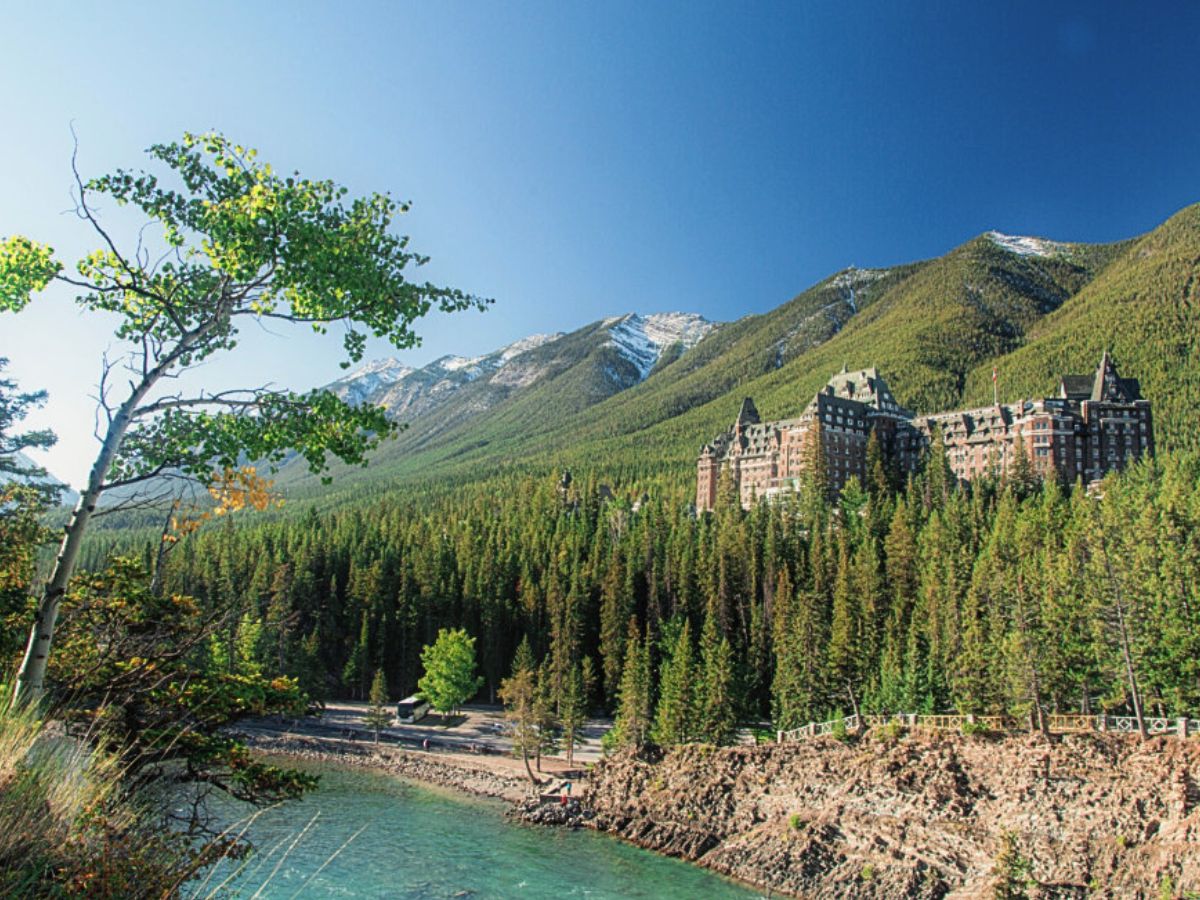 The Fairmont Banff Springs
The Fairmont Banff Springs
Where to stay in Banff National Park
The best place to stay in Banff is, unsurprisingly, the Fairmont Banff Springs. It is as much the castle in the mountains as it appears to be, and makes for the perfect addition to a roadtrip to elevate your time in the mountains.
But for travelers on a smaller budget, or those looking to be closer to the vibrant town, there are a wide array of stays downtown — such as the Banff Caribou Lodge & Spa or the Elk+Avenue Hotel — that offer a comfortable stay at a lower price.
Lake Louise
Lake Louise, while not a town or park in its own right, is often treated as such. It is a major destination, and known for being busy in peak seasons. That being said, the stunning blue water views are worth the crowds, and quiet spots around the lake are surprisingly easy to find.
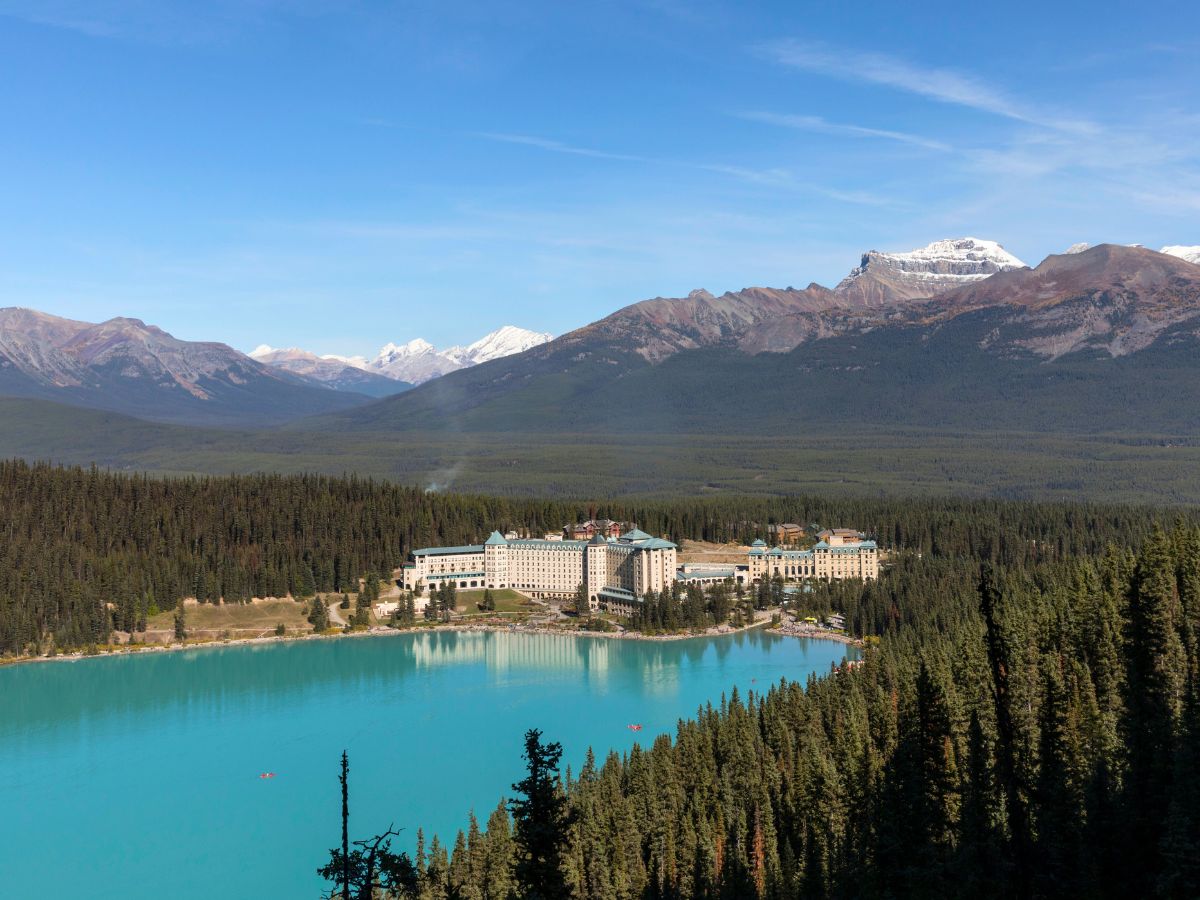 Fairmont Chateau Lake Louise at one end of the lake | Credit: Rocky Mountaineer
Fairmont Chateau Lake Louise at one end of the lake | Credit: Rocky Mountaineer
Where to go near Lake Louise
The lake itself is the main draw at Lake Louise. While the Fairmont Chateau Lake Louise is situated at one end, there is no accompanying town to explore.
Nearby, though, a winding road takes you further into the mountains to find Moraine Lake, nestled in the Valley of the Ten Peaks. Private vehicles are not permitted on the road to Moraine Lake, but free shuttles can be booked through Parks Canada.
What to do in Lake Louise
As one of the most stunning natural landscapes, time spent just looking is time well spent. But those looking for a more active experience can canoe on or hike around the lake.
Easy hiking trails follow the eastern lakeshore, quickly taking you away from the vast majority of other visitors and rewarding you with peaceful views back across the water to the Fairmont.
Another option is the trail leading to Lake Agnes Teahouse (about an hour uphill). The teahouse has been serving mountaintop tea to weary hikers since 1905. This hike is popular but significantly less busy than the waterfront, and it offers the unique chance to sample specialty tea at an altitude of over 7000 ft.
If you aren’t interested in a workout in exchange for your tea, The Fairmont Chateau Lake Louise offers a delectable afternoon tea overlooking the water.
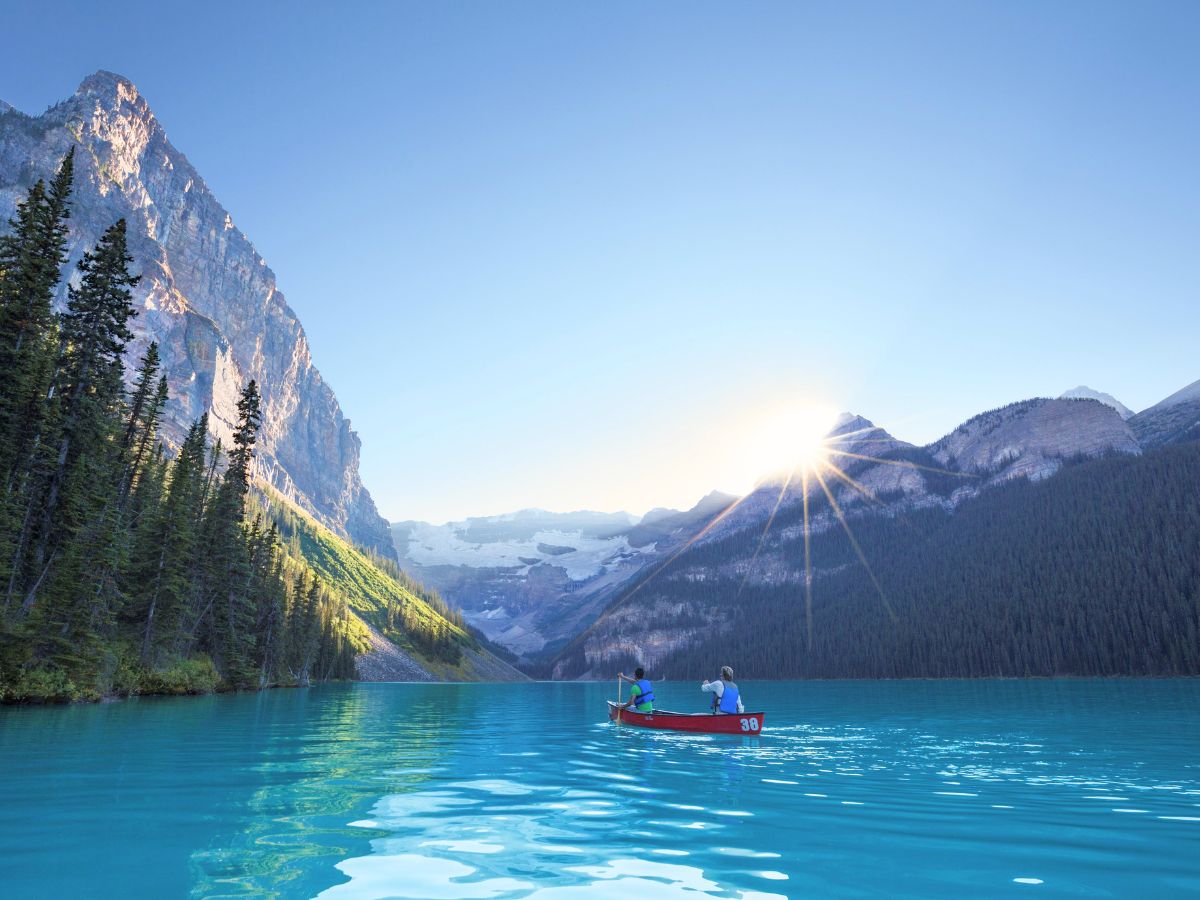 Canoeing Lake Louise | Credit: Travel Alberta
Canoeing Lake Louise | Credit: Travel Alberta
Where to stay in Lake Louise
While there are options to stay away from the lake in the ‘Lake Louise Village’ — which is less a village and more a cluster of useful amenities supplying the remote area — the Fairmont Chateau Lake Louise is the obvious choice and is an unbeatable experience. Not only is the Chateau Lake Louise complete with the traditional Fairmont service and luxury trimmings, it offers a rare opportunity to see a quiet Lake Louise with stars overhead or wake to the sunrise glinting off its surface.
Jasper National Park
Jasper National Park is the bigger of the two main parks in the Alberta Rockies. Despite facing a wildfire in 2024, the large region is still beautiful and the perfect example of nature at its finest. The affected ground, once shaded by pine forests, is alive with bright green growth. And the park stretches deep into the backcountry, where fires did not reach. As the town continues to rebuild, we are excited to support them as they continue to share their beautiful home with the world.
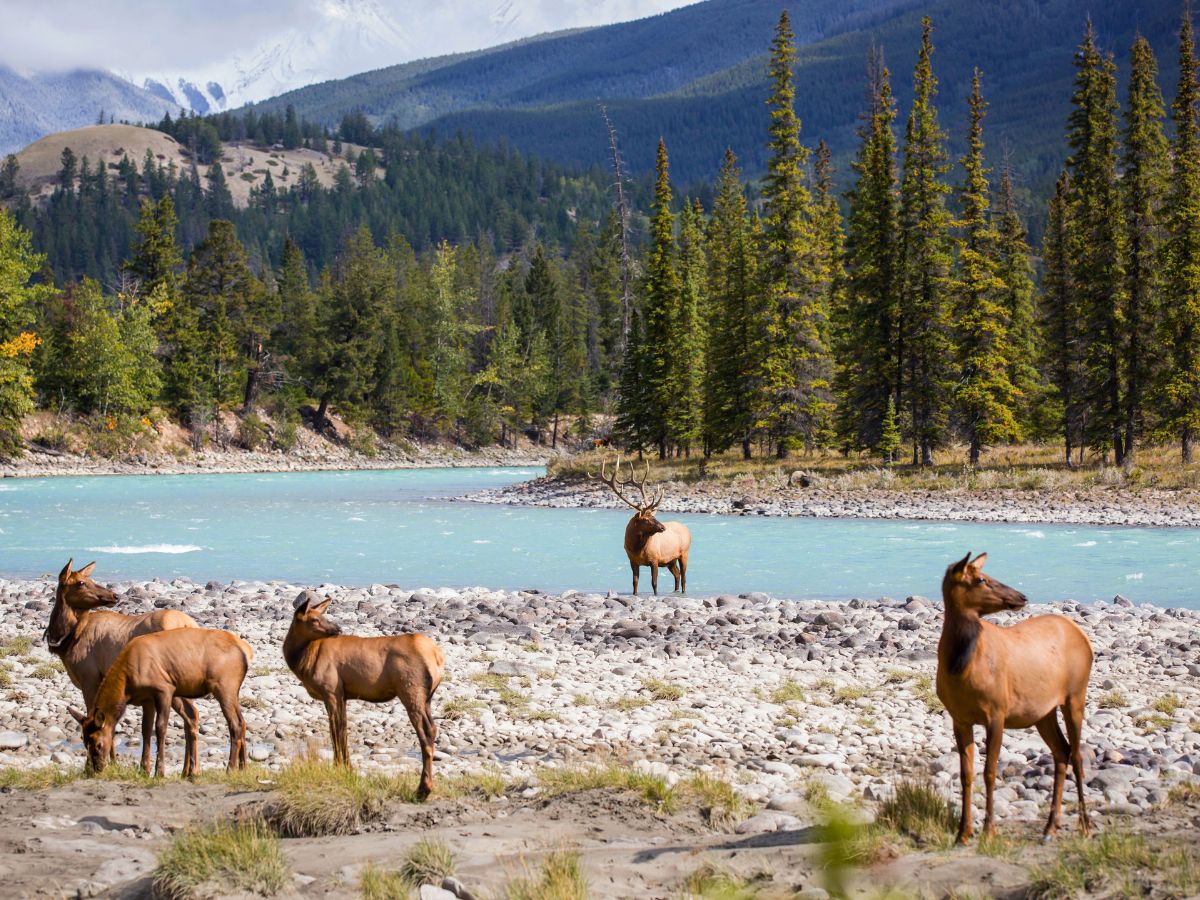 Elk by a glacial river in the Canadian Rockies | Credit: Rocky Mountaineer
Elk by a glacial river in the Canadian Rockies | Credit: Rocky Mountaineer
Where to go in Jasper National Park
Jasper National Park is home to an overwhelming number of natural wonders. And, despite its vast backcountry — spots far from civilization — many are easily accessible from the road winding through.
The road itself manages to be a destination. The Icefields Parkway might be one of the most spectacular highways on earth, as it passes through grand valleys, under towering peaks, and past ancient glaciers. This is a kind of grandeur that needs to be seen to be believed.
The Columbia Icefield is one of these, and can be seen for many miles along the road. It meets the road at the Athabasca Glacier, where visitors have the opportunity to venture onto the ice and stand, quite literally, on ancient history.
Maligne Lake and Maligne Canyon are two other must-see areas in Jasper. Though smaller in scale than the disproportionately large Columbia Icefield, they allow guests to wholly connect with the region's history as they introduce visitors to the Indigenous Stoney peoples culture, with Maligne Lake once being considered the entrance to the Rocky Mountains, and being home to the still-sacred Spirit Island.
Jasper Town
Jasper is smaller than Banff, and offers a more down-to-earth experience of life in the Rockies. It’s an authentic mountain town where locals live and work and travelers pass through year-round.
Small business thrives in Jasper, so exploring coffee shops, bars, restaurants and stores run by locals is the best way to see it. And, for a more informative look at the area’s history, the local Jasper-Yellowhead Museum & Archives documents Jasper’s history — from fur trade to early railway tourism — and is well worth the short time it needs to explore.
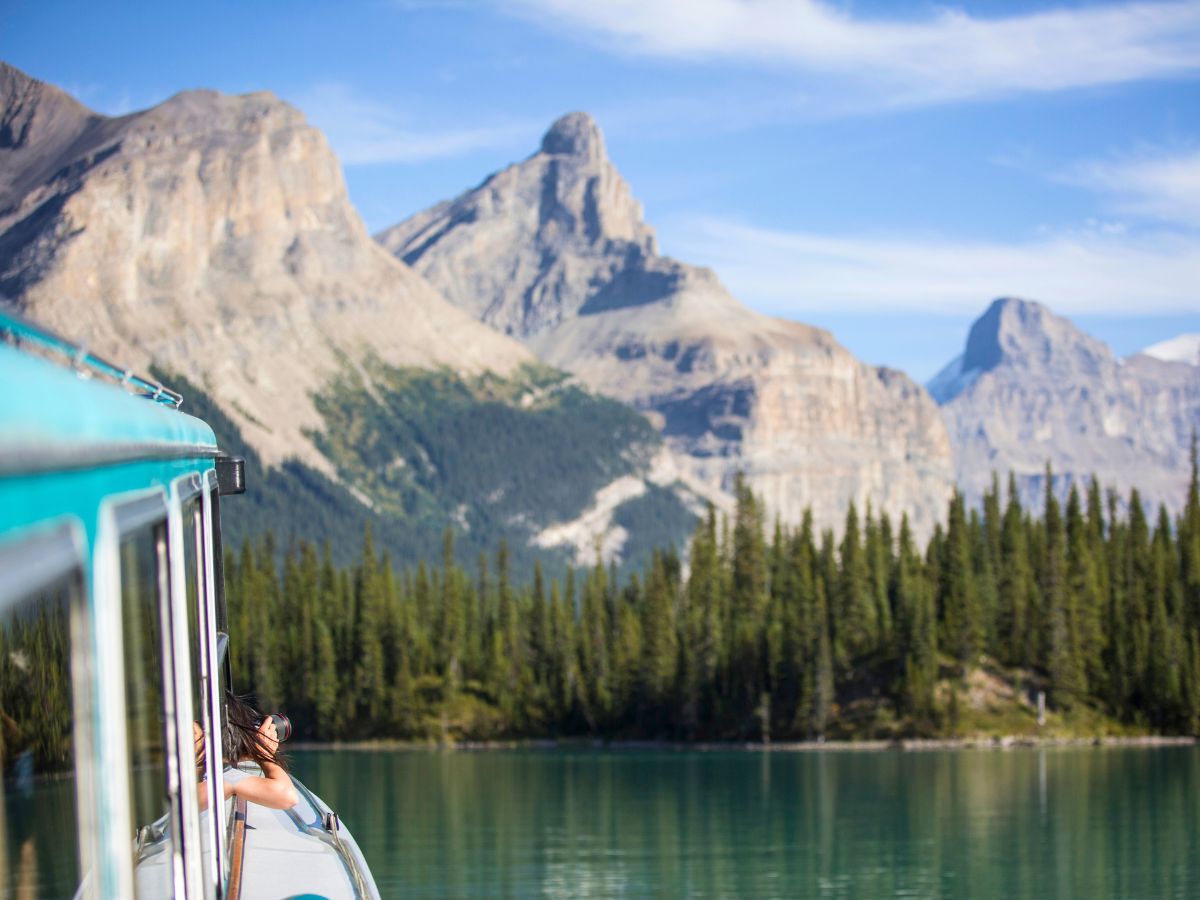 Maligne Lake Cruise | Credit: Rocky Mountaineer
Maligne Lake Cruise | Credit: Rocky Mountaineer
What to do in Jasper National Park
Much like Banff, Jasper National Park is best explored through its access to some of nature’s finest wonders.
As we previously mentioned, driving the Icefields Parkway is a must-do in Jasper, including taking the time to step aboard a specialized ‘Ice Explorer’ and venture onto the Athabasca Glacier.
To explore Maligne Lake, a cruise across its waters is the perfect way to both take in its views, and learn about its history and connection to local Indigenous peoples from an expert onboard guide. Or, to learn more about the region, Jasper nature walks with knowledgeable guides introduce guests to the lands by foot.
After it all, an additional stop in Miette Hot Springs Is a perfect way to unwind, held by hot — and, to many people, healing — waters without leaving the stunning views behind.
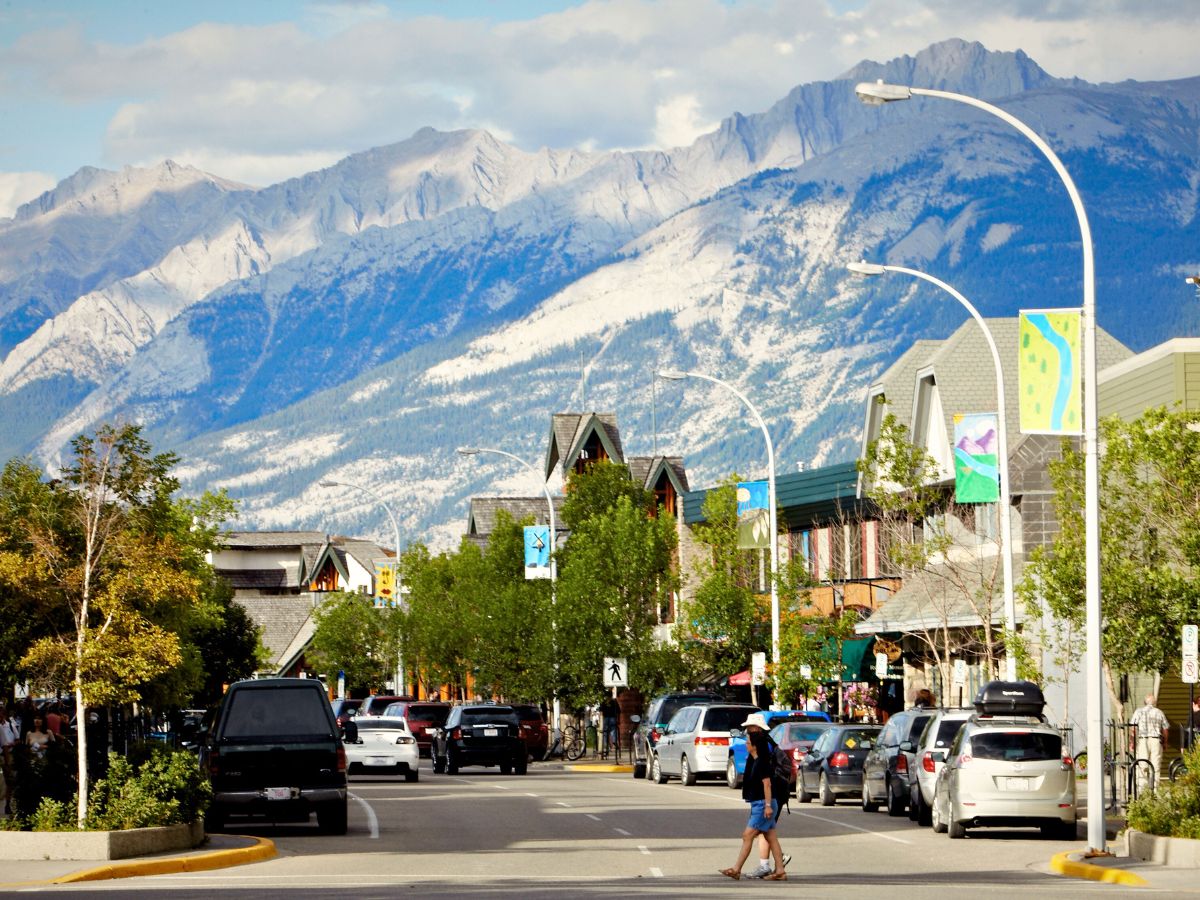 Downtown Jasper below towering mountains | Credit: Tourism Jasper
Downtown Jasper below towering mountains | Credit: Tourism Jasper
Where to stay in Jasper National Park
In Jasper, you choose between staying downtown, or across the Athabasca River.
Downtown, the best spot is the Forest Park Hotel, especially in the newly-renovated Alpine Wing which is finished with soft wood accents for an elevated cabin atmosphere.
Or, across the river, more traditional forest cabins can be found at Pine Bungalows Resort, completing the rural mountain town experience.
For the most elegant stay, though, the Fairmont Jasper Park Lodge is unbeatable, offering views across Beauvert Lake and the uninterrupted mountains behind from its heated pool, and signature Fairmont service across the board.
Is Banff or Jasper Better?
Both Banff and Jasper are incredible stops, and we believe a trip to the Canadian Rockies without time spent in each of its main towns misses out on some of the best experiences that can be found in the mountains. We recommend spending time in each.
Yoho National Park
Yoho National Park remains slightly off the beaten path for many visitors despite being home to beautiful spots like Emerald Lake and Takakkaw Falls.
This region makes an amazing addition to your road trip itinerary, and can be explored solo or through a guided tour, ensuring you find the hidden spots missed by most visitors.
Your Canadian Rockies Itinerary
The following itinerary features excursions included in our Canadian Rockies packages, as well as additional activities and stops recommended by our travel experts. Specific hotels, tours, and fees may or may not be included on your trip. Please contact a Travel Designer to create your own Canadian Rockies road trip to accommodate your wishes.
This itinerary is packed with adventure, maximizing the amount of Rockies you get to experience in a limited amount of time. While it doesn’t sacrifice space to breathe — inserting little luxuries along your trip to elevate it at every step — it does mean being selective about what activities you want to do.
That being said, we always recommend that you arrive in Calgary the day before you plan to travel into the Rockies so that, when it comes to it, you can focus on the pleasure of the trip.
Calgary is a bustling city with plenty to do, but we recommend a chill evening before your adventure begins.
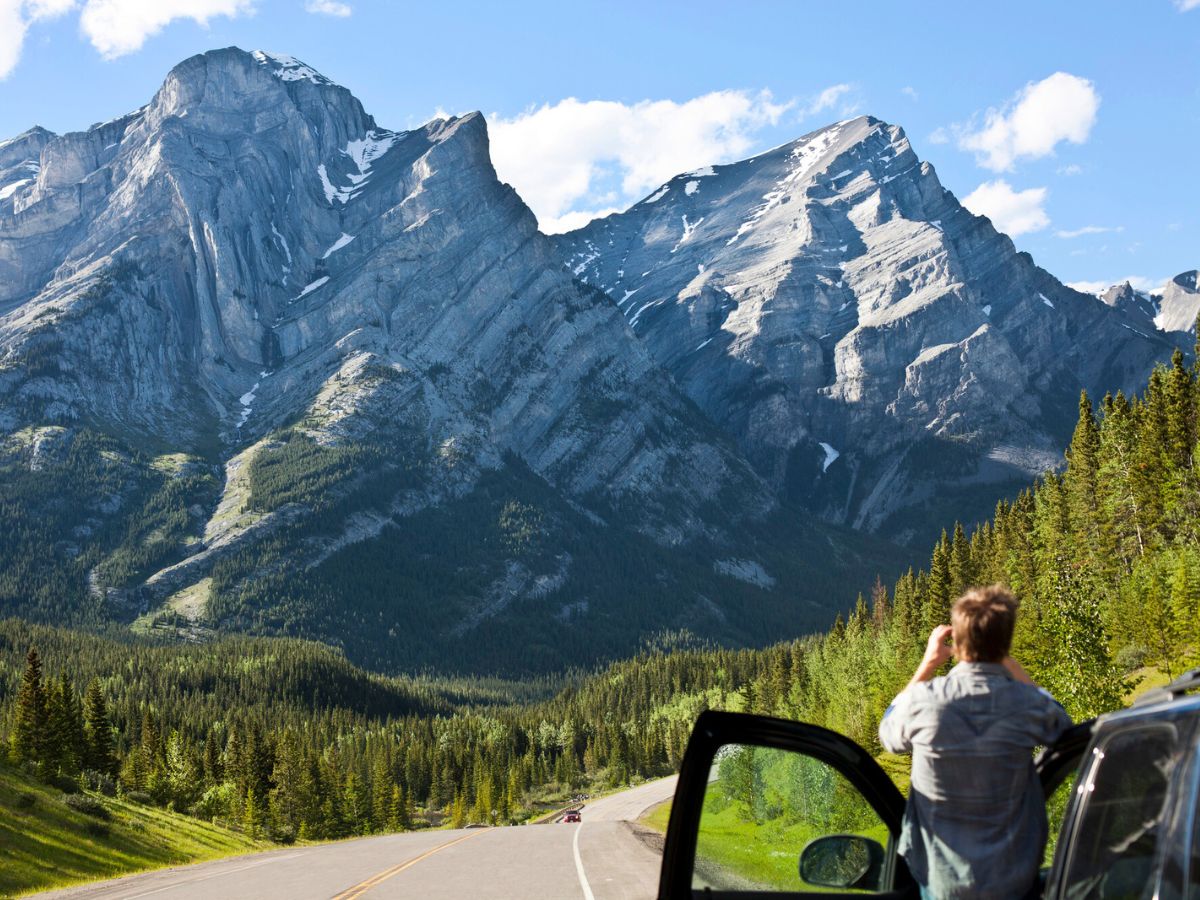 The road into the Rocky Mountains
The road into the Rocky Mountains
Day 1 | Calgary to Banff
Welcome to your Canadian Rockies road trip. Without stopping, the drive from Calgary to Banff only takes about an hour and a half. So, with plenty of time, collect your car after a relaxed breakfast and settle in to begin mid-morning.
The start of your trip is the perfect time to stop at Tim Hortons, to decide if this will become your road trip staple. We recommend a Double Double for something hot or an Iced Capp for something cold, and Timbits, regardless of your preference. If you begin your drive from Calgary International Airport, several are located in the terminal or surrounding areas.
Your drive begins, like Calgary, in the prairies, which push out in a green expanse on all sides from ‘Highway 1,’ the trans-Canada highway and Canada’s longest national road. While the beginning of your drive is mountain-free, as you meet the Bow River the mountains suddenly appear ahead of you, impressively fast for their size and magnitude, and you will enter in.
Here, there is a viewpoint to pull over at Lac Des Arc for your first mountain-backed lake view and enjoy your Timbits, if you have any left.
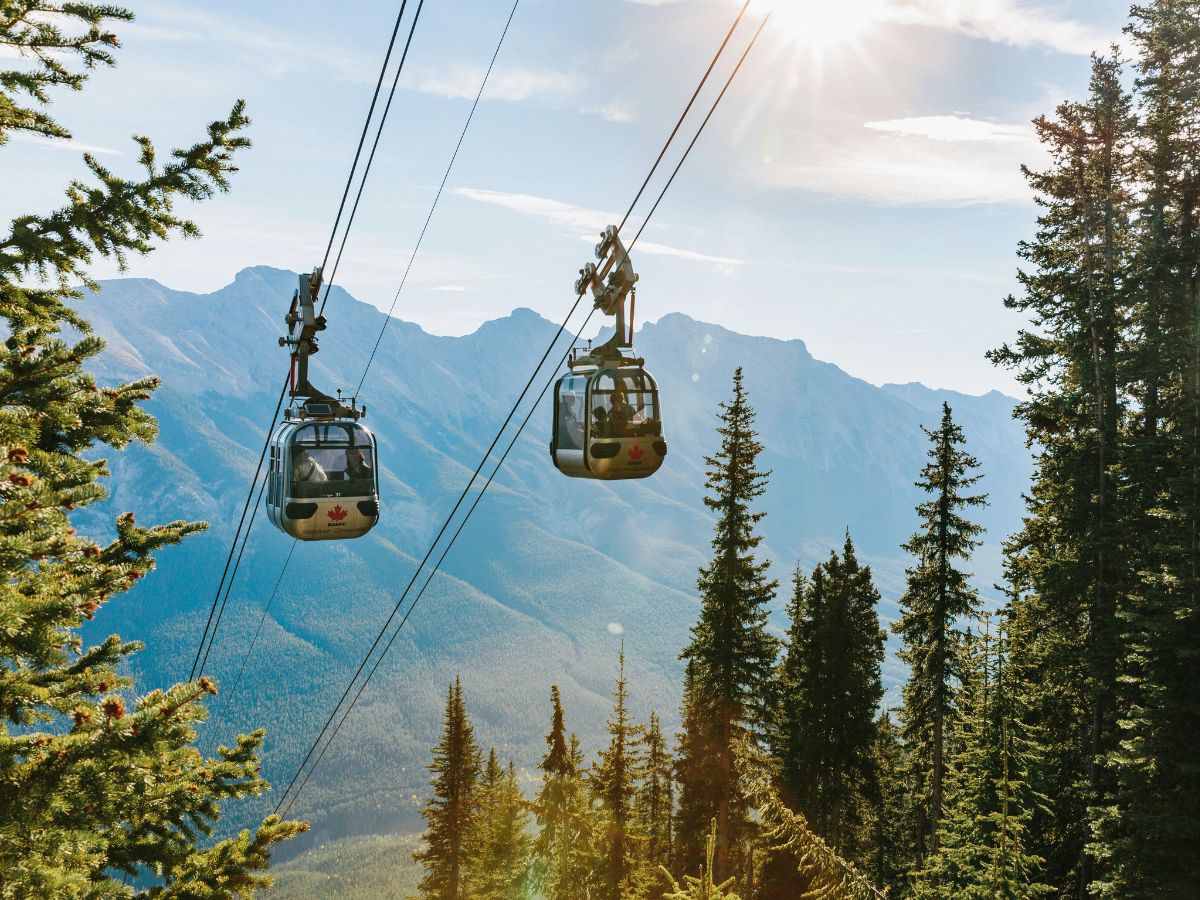 Banff Gondola on the side of Sulphur Mountain
Banff Gondola on the side of Sulphur Mountain
As you continue following Highway 1, you will pass by Canmore, which is an optional stop on your drive. This mountain town is less known than Banff, and quieter as a result. But this makes it one of the most authentic towns in the Canadian Rockies and, for you, the perfect place for lunch.
In Canmore, stroll the three blocks of 8th Street, Canmore’s answer to a main street, and grab a bite to eat at either the Rocky Mountain Bagel Company — famous for, unsurprisingly, its bagels — or the quieter coffeeshop-bookshop combo Cafe Books tucked right next door.
After lunch, continue on for the last half hour to Banff.
Once you arrive in Banff, check into your hotel before spending the remaining afternoon exploring the town. Consider ending your first day by taking Banff Gondola up the side of Sulphur Mountain. Once up there, walk the boardwalk to the Sulphur Mountain Cosmic Ray Station. The walk is easy, but requires lots of stairs.
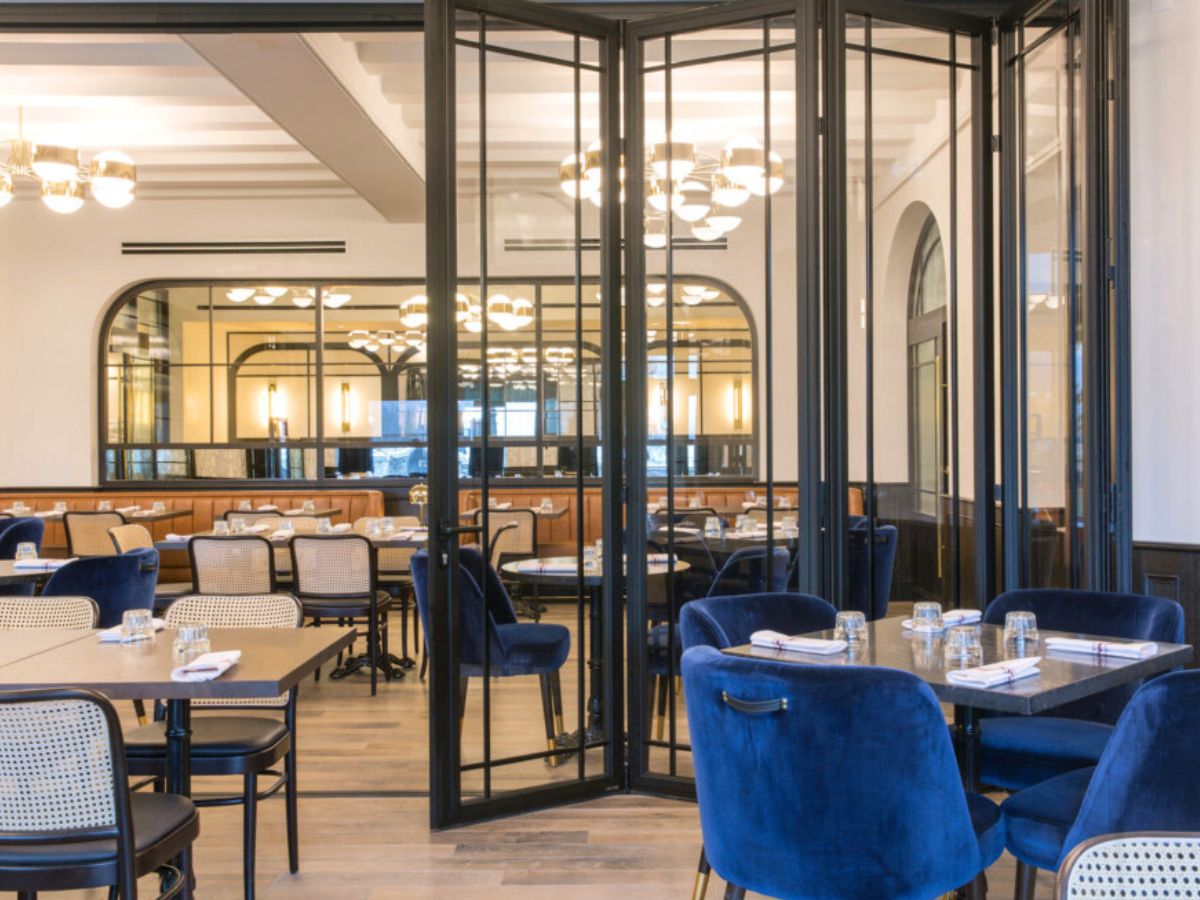 The Vermillion Room in the Fairmont Banff Springs Hotel | Credit: Fairmont
The Vermillion Room in the Fairmont Banff Springs Hotel | Credit: Fairmont
We think the best way to experience the gondola is by taking it up in the early evening, walking the boardwalk, before reserving a spot at Sky Bistro for dinner.
Day 1 Highlights
- Entering the Rocky Mountains
- Optional lunch stop in Canmore
- Free afternoon exploring Banff
- Evening Gondola and mountain-top dinner
Day 2 | Banff
On your first full day in the Canadian Rockies, the sun will rise over the Banff mountains and welcome you to the day.
Enjoy a slow breakfast before exploring the surrounding Banff National Park. If you’re staying in the Fairmont Banff Springs, visit the Vermillion Room for an upscale breakfast buffet or delicious a la carte menu. Or, if you’re staying downtown, head to Melissa’s Missteak for an indulgent classic breakfast
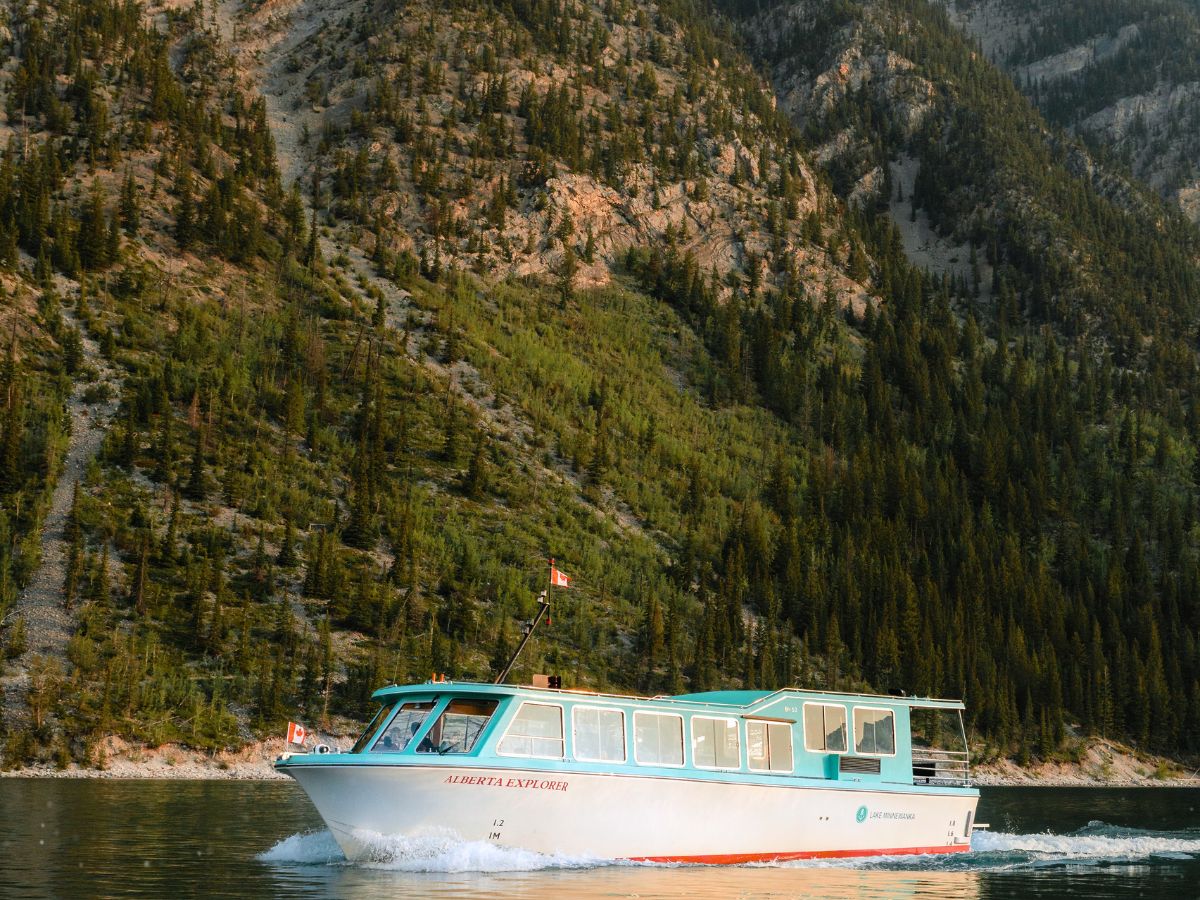 Lake Minnewanka cruise
Lake Minnewanka cruise
From here, adventures abound.
If you didn’t get the chance yesterday, take a morning Banff Gondola up Sulphur Mountain to glide above the forest floor and look down over the valley below. And, on your way down, pass through the Banff Upper Hot Springs. They are not only the original source of tourism in Banff, leading to the creation of Banff National Park in 1883, but are the perfect place to sink into healing waters, taking in the mountainside ambiance as the warm pools melt away any concerns.
If you already visited the Banff Gondola, though, today is a day for laketop voyages. Grab a picnic from downtown Banff — Wild Flour on Banff Ave has the best sandwiches and pastries in town — and head into the wilds.
Visit Lake Minnewanka, the largest lake in Banff, and cruise across its vibrant turquoise surface to Devil’s Gap, on the far eastern side. Though accessible through long backcountry hikes, Devil’s Gap is remote and is filled with the quiet atmosphere that only hard-to-reach places are. From the boat, you are granted entrance to the faraway waters and surrounding views of the plummeting glacial valley that once formed them. With just the sound of your guide, telling tales of the ancient entrance to the dense backcountry, this is the perfect introduction to the true heart of the Canadian Rockies.
Returning to land is bittersweet, in some ways, but sitting on the lake’s edge enjoying your picnic lunch before winding along the roads back to town reestablishes you in the modern Rocky Mountains.
Spend the rest of the afternoon enjoying Banff’s access to commercial amenities, alternating between iconic Canadian brands and smaller local treasures. Visit Banff Park Museum and Banff Trading Post on the south end of Banff Ave. While only one is an official museum, both display the town's long history, and are well worth a stop.
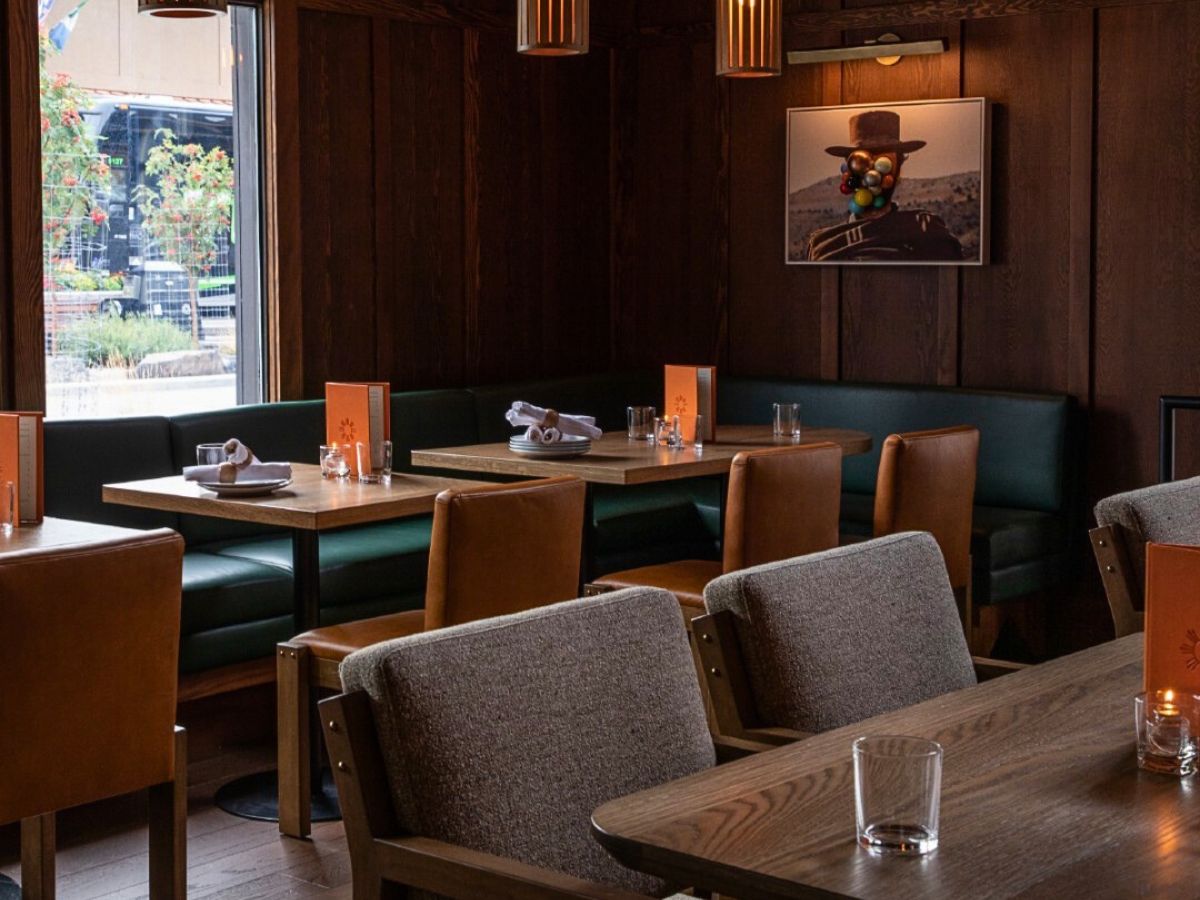 Dining at the Bluebird Woodfired Steakhouse | Credit: Bluebird Woodfired Steakhouse
Dining at the Bluebird Woodfired Steakhouse | Credit: Bluebird Woodfired Steakhouse
End your day with a trip to Bluebird Woodfired Steakhouse, an elevated take on a classic Alberta steakhouse. It is located just away from the main strip of Banff Ave, and is often less busy as a result. But it is still worth reserving a table ahead.
Day 2 Highlights
- Taking a cruise of Lake Minnewanka
- Shopping on Banff Avenue
- Enjoying an Alberta steakhouse dinner
Day 3 | Banff to Lake Louise
Today is a driving day, though your time on the road is short — Lake Louise is just an hour away. That being said, we recommend beginning your journey in the morning.
In summer, the eastern portion of the Bow Valley Parkway is closed to private vehicles to preserve the natural habitat of local creatures. As you leave Banff, follow Highway 1 until Castle Junction, where you will turn right onto the open Bow Valley Parkway, and to Johnston Canyon.
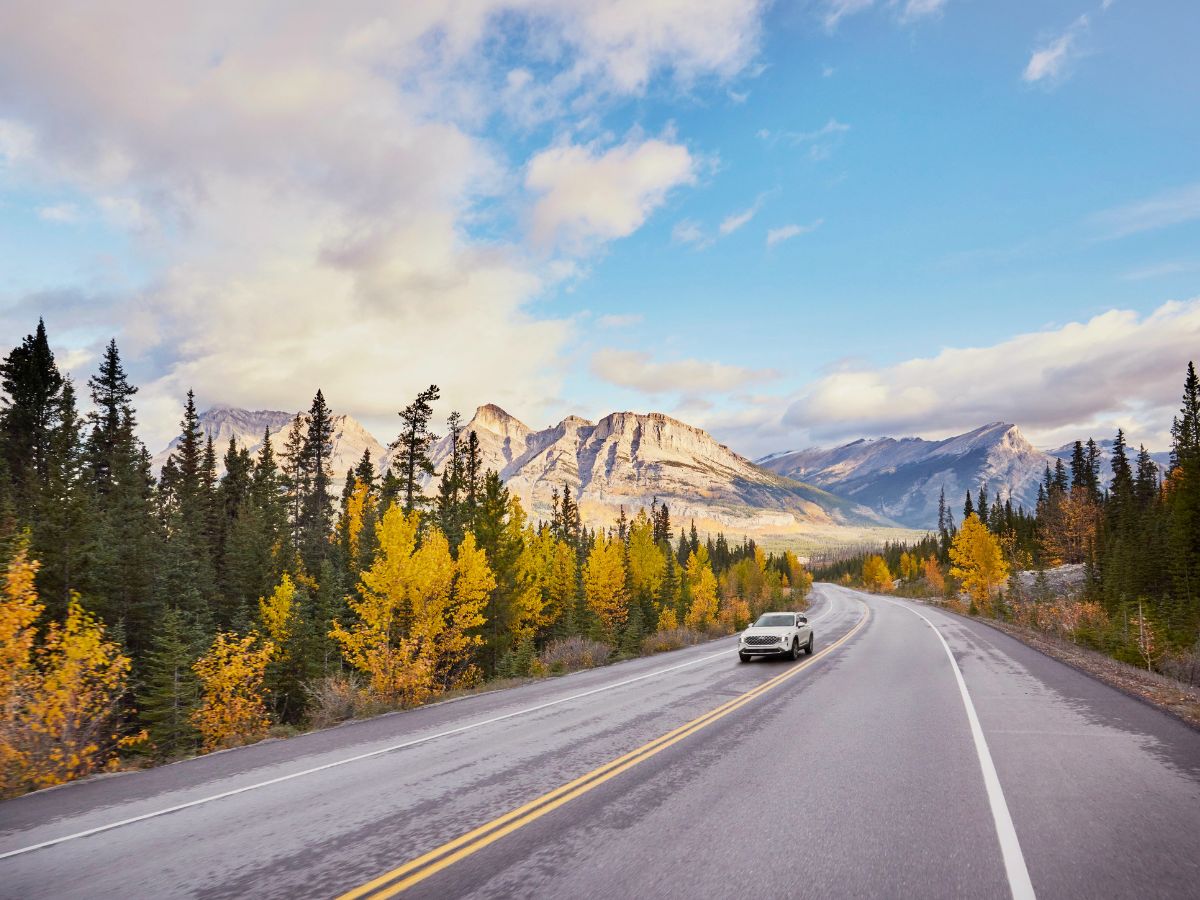 Driving through the wilderness of the Rockies
Driving through the wilderness of the Rockies
Johnston Canyon is nature at its best, and your chance to immerse yourself wholly in it. Two trails lead you into the canyon — a 1-hour round trip to the Lower Falls, and a 2-hour round trip to the Upper Falls. The Lower Falls trail takes you down into the canyon to see the rapids squeezing through the rocks and the cliffs towering above you. But, at the Upper Falls, the canyon opens out somewhat into a basin, where water pours in from the cliff edge above, and you look down on it all.
As is always the case in the Rockies, both trails offer stunning views of the unique landscape and an awe-inspiring view, but the longer hike to the Upper Falls will reward you with a more private experience.
From here, we recommend continuing north on the Bow Valley Parkway to Lake Louise. Compared to Highway 1, the parkway is a quiet, winding road immersing you in the dark pine forests and valleys. Somehow, despite the groups you will find at Johnston Canyon and Lake Louise, the parkway seems ever-quiet.
As you arrive at Lake Louise, take in the views of the expansive lake, forests, and mountains, pausing, taking a moment to soak it all in.
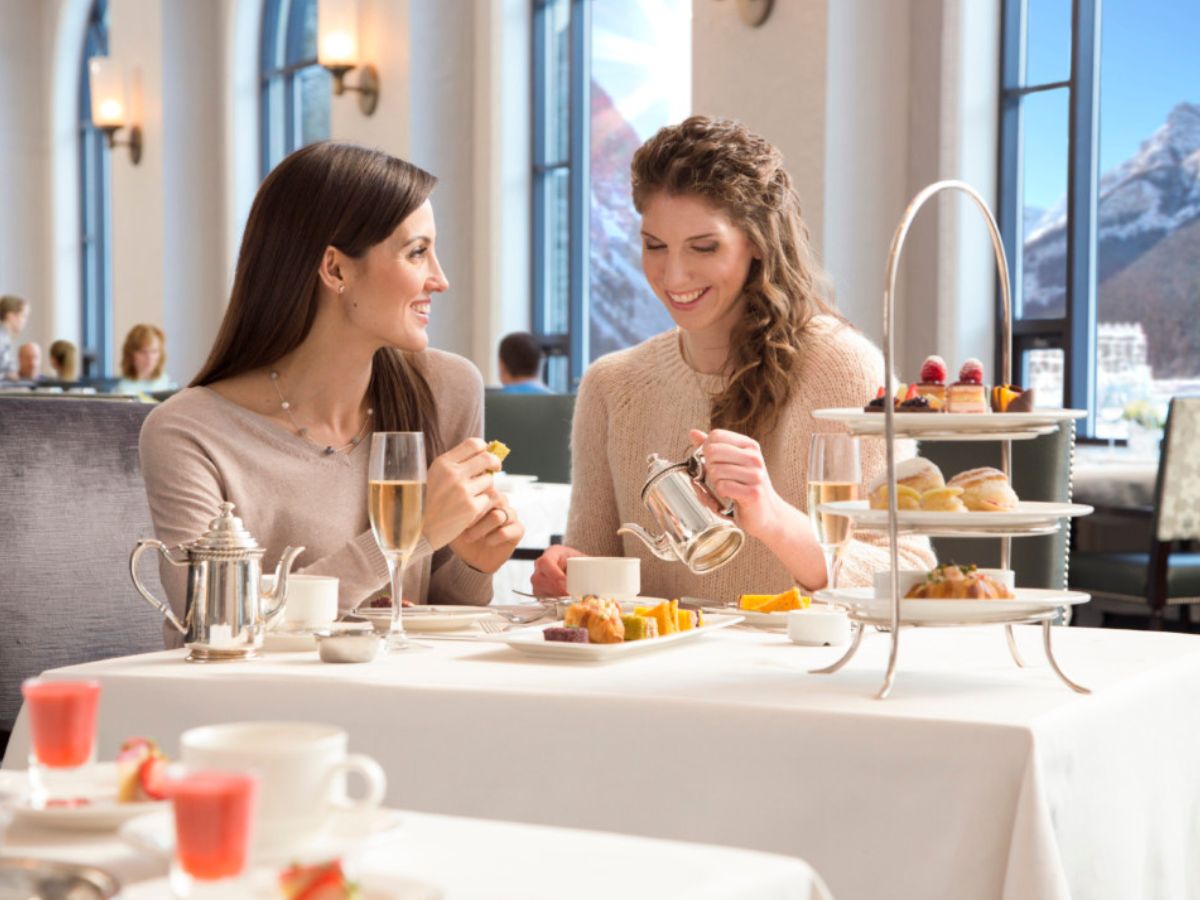 Afternoon tea at the Fairmont Chateau Lake Louise | Credit: Fairmont
Afternoon tea at the Fairmont Chateau Lake Louise | Credit: Fairmont
Lake Louise really is luxury personified. We recommend staying overnight at the Fairmont Chateau Lake Louise for many reasons, the lavish luxury just being one. With convenient lakeside parking and access to the quieter atmosphere at the poles of the day, it completes the Lake Louise experience with a flourish.
But, regardless of if you choose to spend your night here, afternoon tea overlooking the vivid blue water is the perfect way to spend your afternoon. Arrive slightly hungry — a proper afternoon tea is no small undertaking — and indulge in an elegant affair befitting the region’s opulence.
As the day draws to a close, take a peaceful lakeside walk, free from much of the daytime crowds, before relaxing into your evening in the Chateau Lake Louise at dusk.
Day 3 Highlights
- Driving Bow Valley Parkway
- Hiking to the falls at Johnston Canyon
- Traditional Afternoon tea at Fairmont Chateau Lake Louise
Day 4 | Lake Louise to Jasper (via Athabasca Glacier)
Wake early on day four to witness a rare moment of true peace at the water’s edge. Enjoy breakfast in the Chateau overlooking the water before packing your overnight necessities and continuing on, deeper still into the mountains.
As you leave Lake Louise, continuing north, you will turn away from Highway 1, and begin traveling the world-renowned Icefield Parkway.
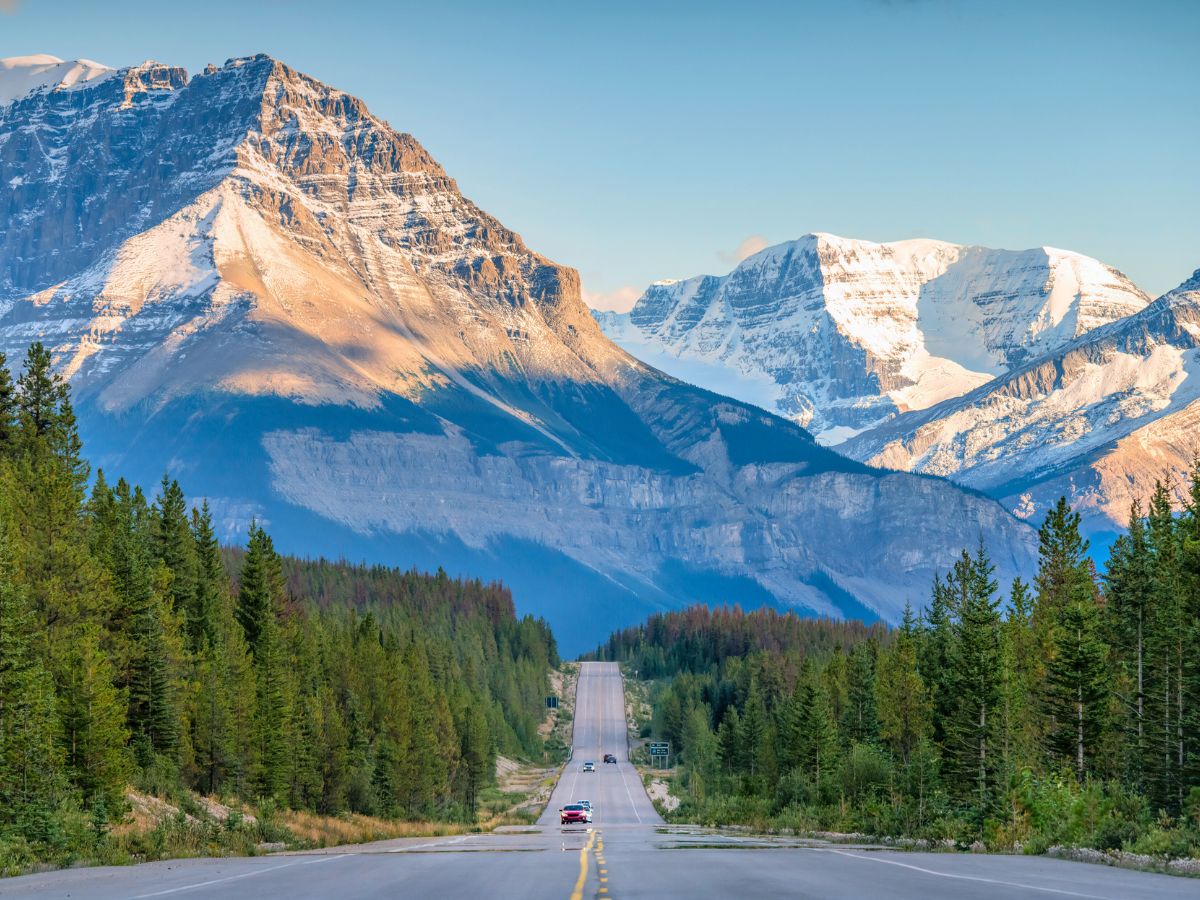 Driving the Icefields Parkway | Credit: iStock
Driving the Icefields Parkway | Credit: iStock
No words can describe the views from Icefields Parkway, as the dense forest-lined road opens up into plunging valleys lined with rugged snow-capped mountains. The scale on which the Canadian Rockies here exist is unfathomable until you personally stand among them, dwarfed by their peaks.
After an hour and a half of the most beautiful drive you have experienced, you are greeted by views of the Columbia Icefield, and the Athabasca Glacier, which you are soon to walk on.
Here, step aboard a specialized Ice Explorer, and make the slow journey up the steep rocky road to the glacier, where you will set foot on ancient ice, still living and breathing to this day. See glacial streams leaving blue channels through the ice, and, if you come prepared with an empty bottle, sample the fresh, chilled water.
 Ice Explorer on Athabasca Glacier | Credit: Travel Alberta
Ice Explorer on Athabasca Glacier | Credit: Travel Alberta
Upon returning from the glacier, venture on to the Columbia Icefield Skywalk to venture over the edge of the deep valley on a glass walkway, and take in the magnitude of your surroundings. Then, continue on to Jasper.
As you arrive in town, settle into the slower pace of life that makes its home in the town. Find a local cafe for a late-afternoon indulgence — we recommend Lostlands Cafe to sample the best baked goods in town — before checking into your hotel and finding dinner.
Jasper really shines through its local community. Despite the recent hardships they faced in the 2024 wildfire, they remain ever-welcoming, and Jasper remains a must-see on any Canadian Rockies trip. As the town continues to rebuild, we suggest supporting local businesses where possible, with spots like the delightful fusion restaurant Mad Grizzly Bistro.Bar providing truly delicious fusion bites and a warm and inviting atmosphere to any and all that pass through.
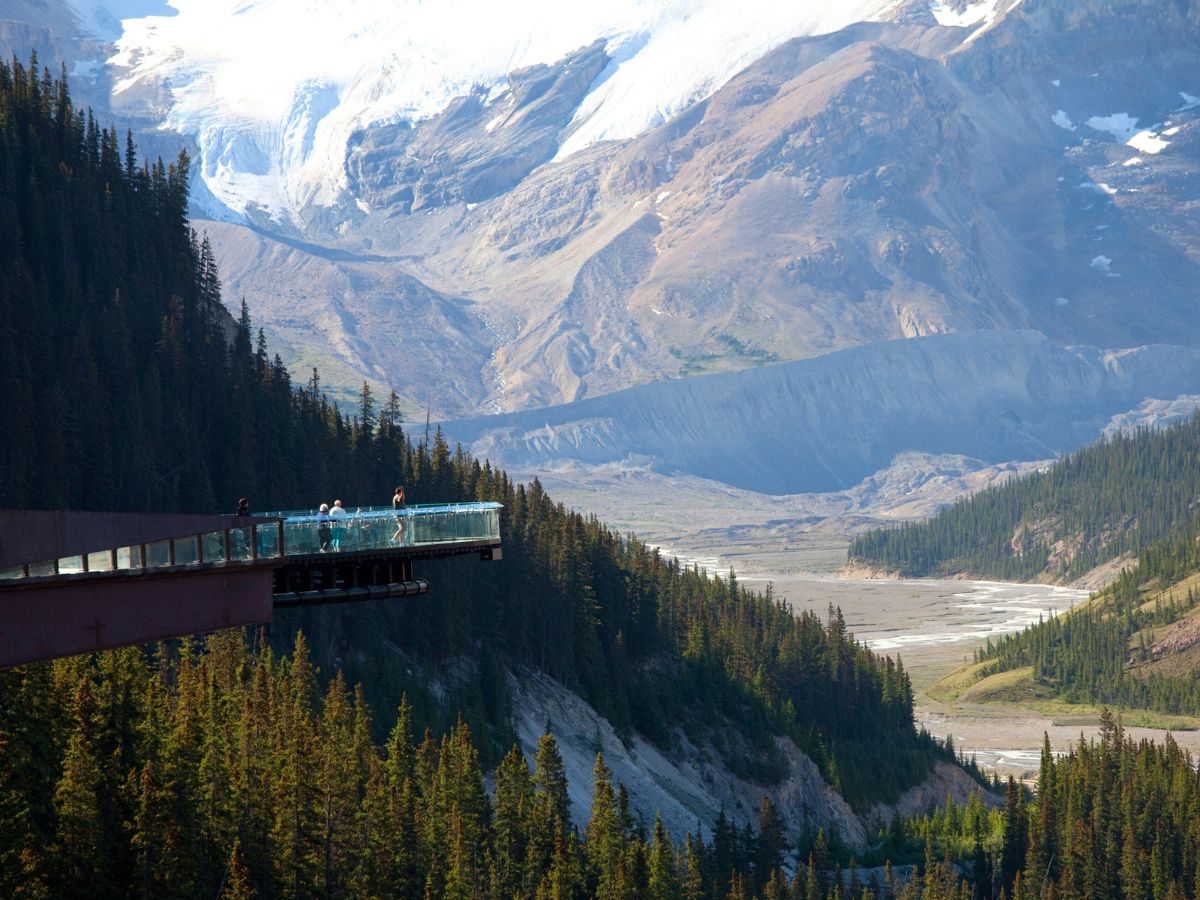 The Skywalk on the Icefields Parkway
The Skywalk on the Icefields Parkway
Day 4 Highlights
- Quiet morning at Lake Louise
- Driving along Icefields Parkway
- Walking on the Athabasca Glacier
- Experiencing local Jasper
Day 5 | Jasper
Today is a leisurely day, to allow you to soak in your last full day in the Rockies.
Enjoy the peace of the small mountain town over breakfast before taking a morning walk through the town, watching as it slowly wakes around you, and keeping your eyes open for wildlife wandering the road’s edge.
After breakfast, make your way to Maligne Lake to embark on a cruise of its waters.
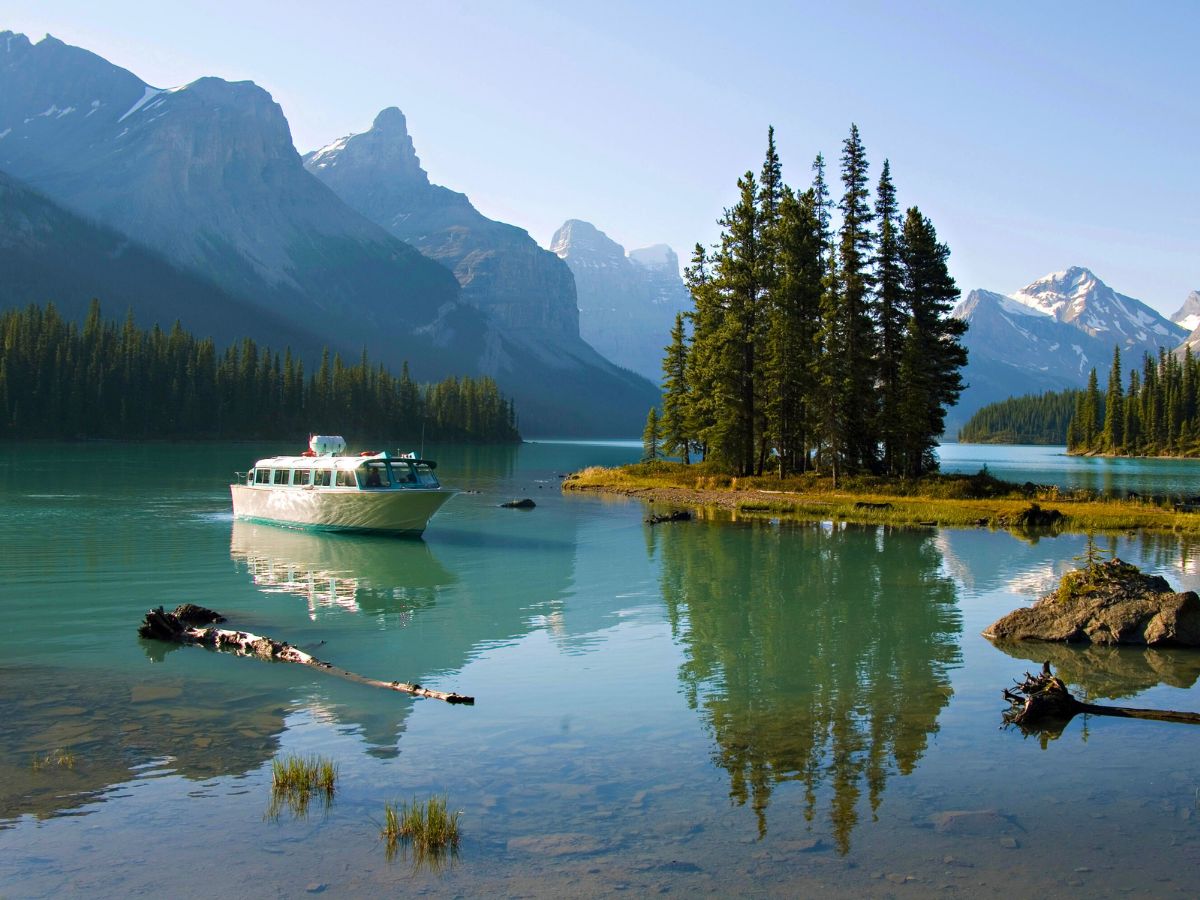 Maligne Lake cruise to Spirit Island | Credit: Persuit
Maligne Lake cruise to Spirit Island | Credit: Persuit
As you cross the glacier-fed waters — which, like others here, are a startling shade of blue — your onboard guide will welcome you into the past and present of the region. You will learn about the wildlife and geology surrounding you, and the myth and legends they inspired. And, as you reach the furthest point of your cruise, you will briefly dock at the remote Spirit Island deep in the Rockies backcountry, which is only accessible by boat. The island is sacred to the Indigenous Stoney peoples, and as a visitor to their lands, you are not permitted to step foot on it.
After boating back, we have left the afternoon up to you so that you can spend your last full afternoon in the mountains as you wish. As you drive the meandering road back to town, you will pass by Maligne Canyon, which has paved trails perfect for short and easy hikes. Or, push on to the quieter Lake Edith and Lake Annette for a surprisingly off-the-beaten-track spot for a picnic, despite its proximity to popular spots.
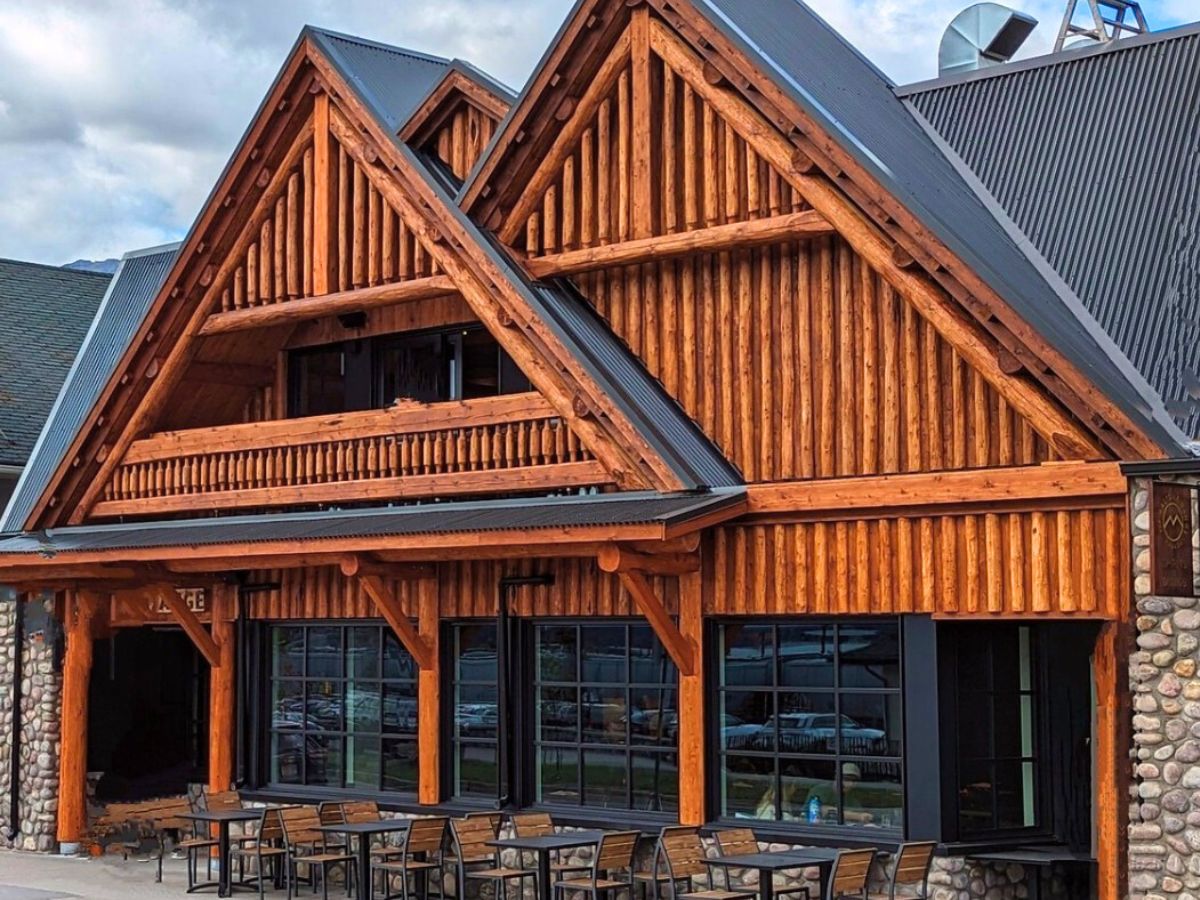 Maligne Range exterior continues the tradition of Jasper’s log cabins | Credit: The Maligne Range
Maligne Range exterior continues the tradition of Jasper’s log cabins | Credit: The Maligne Range
When you return to town, relax into the afternoon. Perhaps stop by the Jasper-Yellowhead Museum and Archives — a short but very worthwhile visit — and pick up any final souvenirs ahead of your upcoming departure. And, as evening comes around, visit The Maligne Range, which specializes in Alberta-sourced ingredients and Canadian Whiskey.
Day 5 Highlights
- Maligne Lake Cruise
- Free afternoon in Jasper
Day 6 | Jasper to Edmonton
All things must come to an end, and this is your final day in the Canadian Rockies. Today’s drive is the longest of the trip, taking you out of the mountains and back into the expansive prairies of central Alberta.
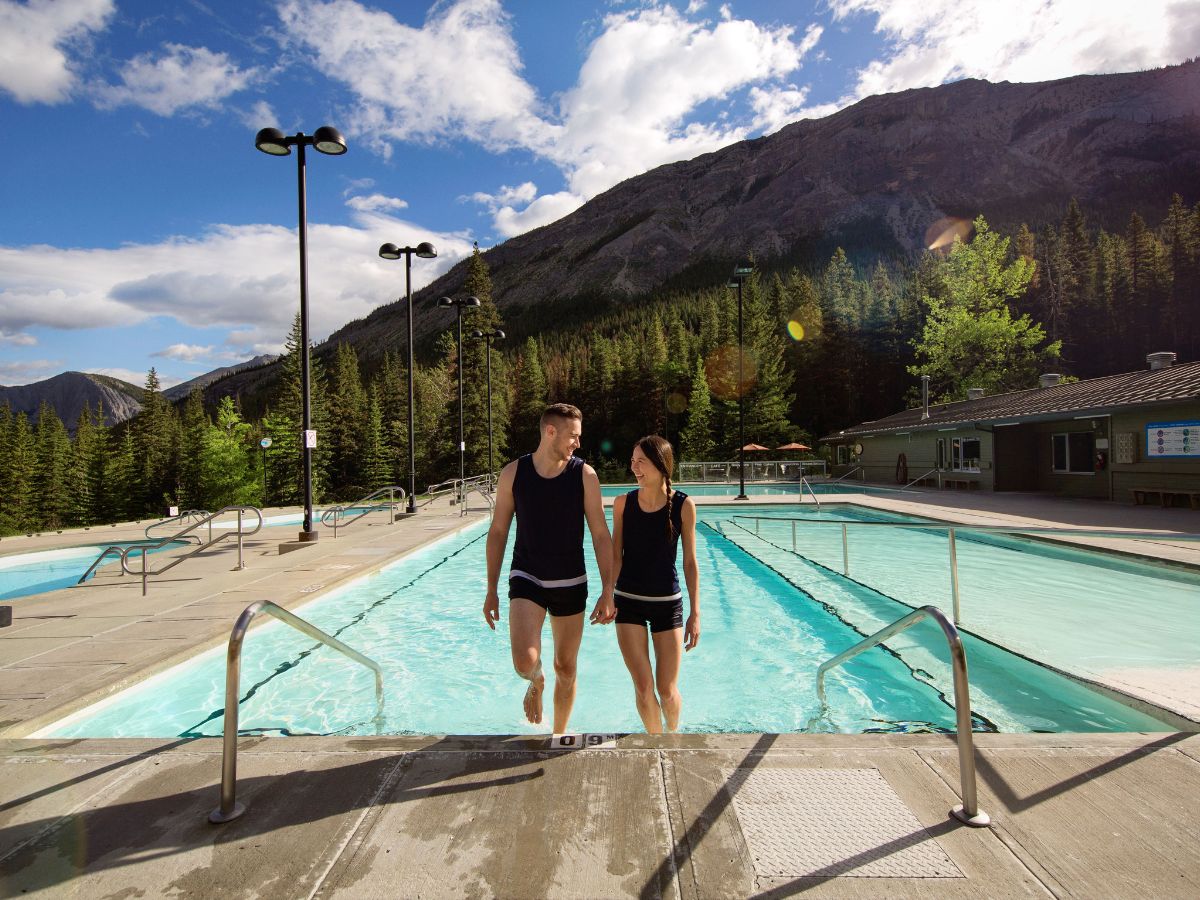 Miette Hot Springs surrounded by forest | Credit: Travel Alberta / Roth and Ramberg
Miette Hot Springs surrounded by forest | Credit: Travel Alberta / Roth and Ramberg
As you approach the edge of the Rockies, you will pass by Miette Hot Springs, hidden at the end of a road that snakes off to your right. Let this be your chance to reset, relaxing in heated pools and taking in the surrounding views a final time, as the water helps you unwind and signifies the closing of your adventure.
After your well-deserved rest, continue along the Yellowhead Highway. There are few towns between here and Edmonton — you are about to venture into a more rural Alberta — so we recommend stopping at the Folding Mountain Brewing Taproom and Kitchen to refuel before the rest of your drive. The taproom has plentiful lunch options, and a final view of the Canadian Rockies while you eat.
At the end of your final day, Edmonton will greet you as you return to modern city life and signify the end of your Canadian Rockies itinerary.
Day 6 Highlights
- Relaxing in Mitte Hot Springs
- Arriving in Edmonton
Alternate Day 6+7 | Jasper to Vancouver by train
If you have reached this point and decided that your adventure cannot end here, consider a new way to travel. Leaving your car in Jasper, board a train from the quaint train station in town — either the VIA Rail Canadian Train or ultra-luxurious Rocky Mountaineer — bound for the West Coast.
Across two days, you will be treated to new views of the Rocky Mountains, far beyond where roads go, and the chance to unwind onboard among comfort and luxury.
On Rocky Mountaineer, take the train through the day, enjoying engaging hosts, panoramic views, and gourmet meals as you go, and rest in a comfortable hotel in Kamloops at night. And, on your second day, trade Rocky Mountain views for the North Shore Mountains and the temperate rainforests lining the Pacific Northwest.
 VIA Rail trains meet in the Canadian Rockies | Credit: VIA Rail
VIA Rail trains meet in the Canadian Rockies | Credit: VIA Rail
Or, continue your adventure on VIA Rail’s Canadian train, passing through the mountains before you sleep onboard as you slip through the night. In the morning, wake to coastal views as you enjoy breakfast in the dining car.
The train takes you from Alberta to Vancouver, British Clolumbia, and gives you the opportunity to explore the port city before your time in Canada is over.
While this is an optional addition to your road trip, it provides an elevated way to end your mountain ventures.
Highlights from the Train
- Two days of train travel through the Rockies
- Onboard dining and included accommodation
- Time in Vancouver, British Columbia
Book this Canadian Rockies Road Trip Today
This Canadian Rockies itinerary is based on our best-selling tour Road Trip through the Canadian Rockies, designed by travel experts. Whether this is exactly what you are looking for, or you want something curated just for you, our expert Travel Designers are ready to craft your bespoke road trip adventure.
Contact a Travel Designer today to start planning your dream escape. Or, sign up for our newsletter to receive exclusive travel inspiration, selected itineraries, and insider tips straight to your inbox.
Preparing for Your Trip
Your itinerary marks the start of your trip preparations. Now that you have decided on your route, and the ways you choose to enhance it, you can begin to prepare for your time in Canada.
Renting a Car
We highly recommend renting a car to make the most of your trip to the Canadian Rockies. Road trips are an incredible way of seeing the area. When you book a road trip with Canada by Design, we arrange everything from activities to car rentals, so that, upon arrival, you can begin your exploration.
You can pick up your rented car at Calgary International Airport, and there are drop-off places throughout the Rockies so you don't have to complete a full-circle trip.
Getting a National Parks Pass
When entering National Parks, you will need valid Park passes for entry. In the Rockies, this includes Banff, Jasper, and Yoho National Parks. For a road trip through several Rockies National Parks, we recommend the Discovery Pass, which is typically cheaper than daily charges for trips of 7+ days.
Seasonal Activities
Depending on when you choose to travel, you can expect different seasonal activities on offer in the Rockies.
Summer Adventures
Summer is the best time to visit the Canadian Rockies if you want to see the lush green landscapes lit by long sunny days and, importantly, chance bear sightings. But, you should be prepared for crowds as this is the peak travel season.
That being said, the Rocky Mountains shine in the summer, and truly outweigh the fact that you share it with other visitors.
Summer season highlights include hiking, canoeing, horseback riding, cycling, and mountain biking. And guided tours run frequently throughout the mountains, letting you wholly experience the region as you learn more about the history and geology as you go.
 The Canadian Rockies in the fall
The Canadian Rockies in the fall
Fall Foliage and Larch Trees
Fall is a great time to visit the Canadian Rockies if you want a more private trip. Hotspots fall quiet as the weather cools, and the golden larches make themselves known, interspersed among the evergreen pines.
The beginning of fall — from September to early October — is a wonderful alternative to a summer road trip. The weather can be cool in places, but there are still plenty of things to do, including tours, low-altitude hikes, and lake cruises.
Winter Trips
While we do not recommend driving in the winter, there are still plenty of opportunities to see the Rockies coated in white.
Train trips through the mountains offer backcountry views of pristine snow and frozen valleys. Our partner brand, Canada Rail Vacations, offers dedicated winter rail trips to see the Great White North in its element.
Spring in the Rockies
In spring, snow still sits on the mountaintops and bears begin to come out of hibernation.
After a long winter, various places in the Rockies celebrate the coming of spring. In Banff, the ‘Bloom & Brunch Festival’ is held at the top of Sulphur Mountain from mid-April to mid-May to welcome in the season.
Be aware that spring can arrive late in the Rockies, with May typically being the first month of reliably good conditions, but is another incredible time to see the Rockies at their quietest.
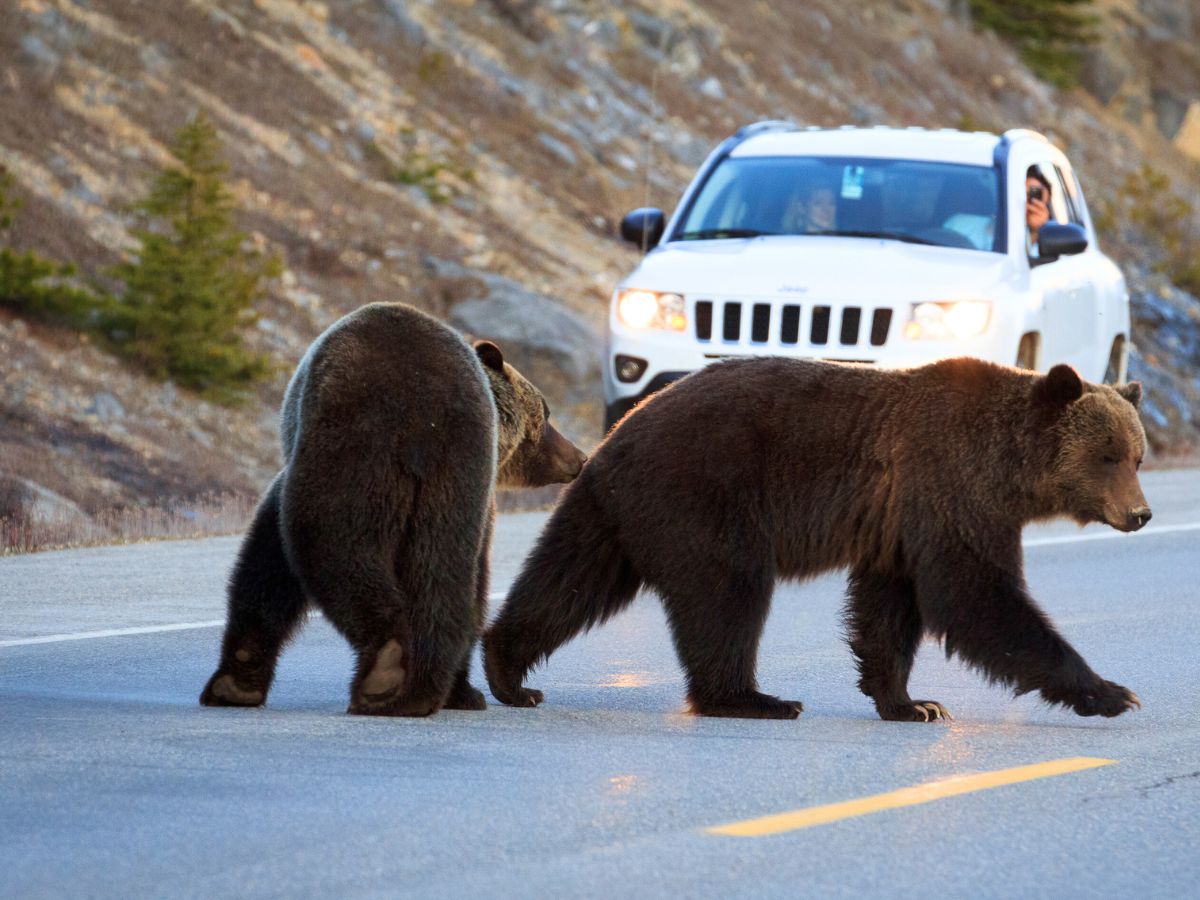 Spotting bears on the road near Jasper | Credit: Tourism Jasper
Spotting bears on the road near Jasper | Credit: Tourism Jasper
Final Tips and Reminders
Before you begin your drive, here are your final necessities to make this the road trip of a lifetime.
What to Pack
Packing for a trip to the Canadian Rockies depends on the season and what you plan to do. Remember that you’re in the mountains, so be sure to pack layers, as the weather can be cool and unpredictable.
The basics are a raincoat, sunscreen, hiking layers, a camera, and binoculars for far-off wildlife. But additions like bug spray and a reusable water bottle can also be useful.
Last-Minute Reminders
- Stock up on road trip snacks — our Canadian favorites are Ketchup chips for something salty, and Coffee Crisp chocolates for something sweet.
- Stop at Tim Hortons for Timbits. Touristy? Yes. But delicious, too. In the summer, an 'Iced Capp' is the way to go, beloved by visitors and locals alike.
- Rest stops along the roads provide frequent opportunities for bathroom breaks. But, oftentimes, they do not have a gas station, so keep an eye on your gas as you pass through more remote regions.
- Whether it’s pausing at a ‘bear jam’ — a signal of wildlife on the roadside — or a stunning lake you spot from the drive, our itinerary isn’t rigid and is yours to enjoy. Take time and stop at scenic sites if they call to you, and ensure you make time to follow your in-the-moment impulses. That is where a road trip becomes truly memorable.
Safety Tips
- Keep your distance from wildlife. If you see a bear by the road, be sure to pull over to avoid road disruption and stay in your car.
- If you plan on venturing away from popular spots, carry bear spray and hike in groups.
- Be prepared for changing weather conditions and potential road closures.
Table of Contents
- How many days do you need in the Canadian Rockies?
- What is the best Canadian Rockies itinerary for 7 days?
- Planning Your Canadian Rockies Itinerary for an Unforgettable Summer Road Trip
- Planning Your Canada Road Trip
- How Long Do You Want to Travel For?
- Where do You Want to Start and End Your Road Trip
- Where do you want to go in the Rockies?
- When Do You Want to Visit the Canadian Rockies?
- Banff National Park
- Where to go in Banff National Park
- What to do in Banff National Park
- Banff Town
- Where to stay in Banff National Park
- Lake Louise
- Where to go near Lake Louise
- What to do in Lake Louise
- Where to stay in Lake Louise
- Jasper National Park
- Where to go in Jasper National Park
- Jasper Town
- What to do in Jasper National Park
- Where to stay in Jasper National Park
- Is Banff or Jasper Better?
- Yoho National Park
- Day 1 | Calgary to Banff
- Day 1 Highlights
- Day 2 | Banff
- Day 2 Highlights
- Day 3 | Banff to Lake Louise
- Day 3 Highlights
- Day 4 | Lake Louise to Jasper (via Athabasca Glacier)
- Day 4 Highlights
- Day 5 | Jasper
- Day 5 Highlights
- Day 6 | Jasper to Edmonton
- Day 6 Highlights
- Alternate Day 6+7 | Jasper to Vancouver by train
- Highlights from the Train
- Book this Canadian Rockies Road Trip Today
- Preparing for Your Trip
- Renting a Car
- Getting a National Parks Pass
- Seasonal Activities
- Summer Adventures
- Fall Foliage and Larch Trees
- Winter Trips
- Spring in the Rockies
- Final Tips and Reminders
- What to Pack
- Last-Minute Reminders
- Safety Tips
